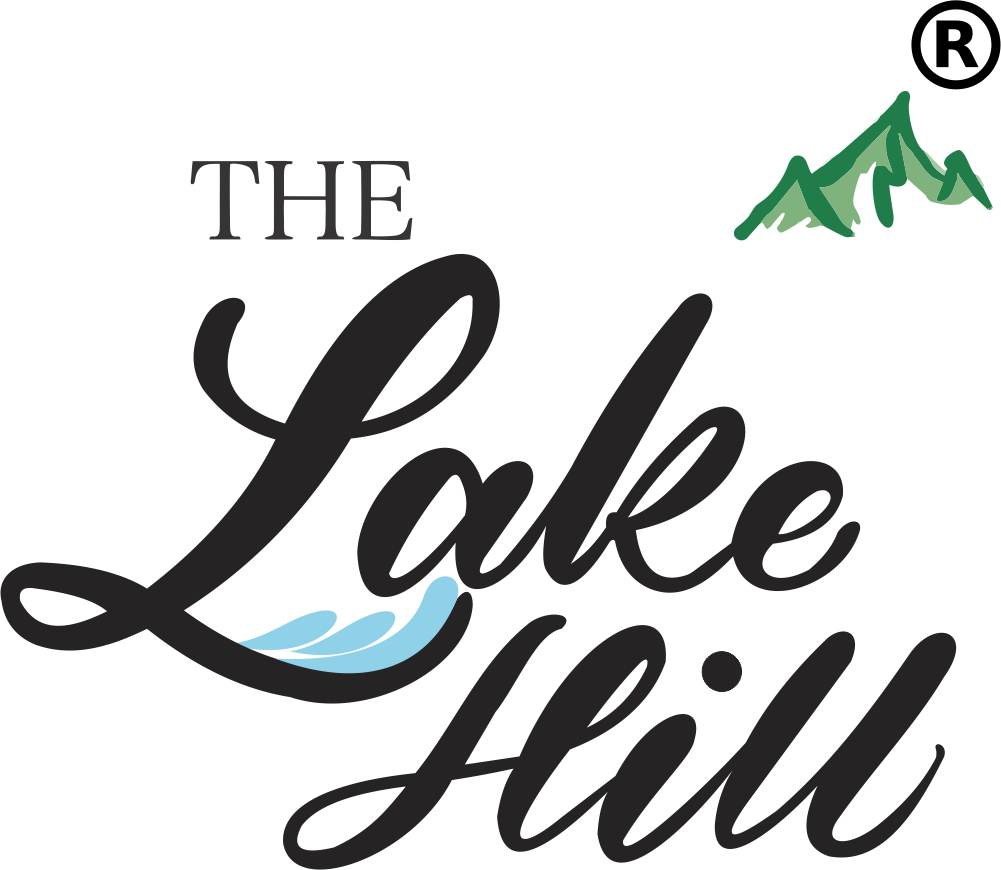Fresh Water Fishes
African Cichlid Fish
● Usually stays in rocks
● From the family Cichlidae, the cichlids have the most no of endangered species in the world.
● Many species from the family are found in lakes of Africa – Tanganyika, Malawi, Victoria and Edward.
● Cichlids usually thrive in temperatures ranging from 23-28 degrees (Celsius).
● Being herbivorous, they feed on aquatic algae, weeds and aquatic plants.
● They live for about 8 years
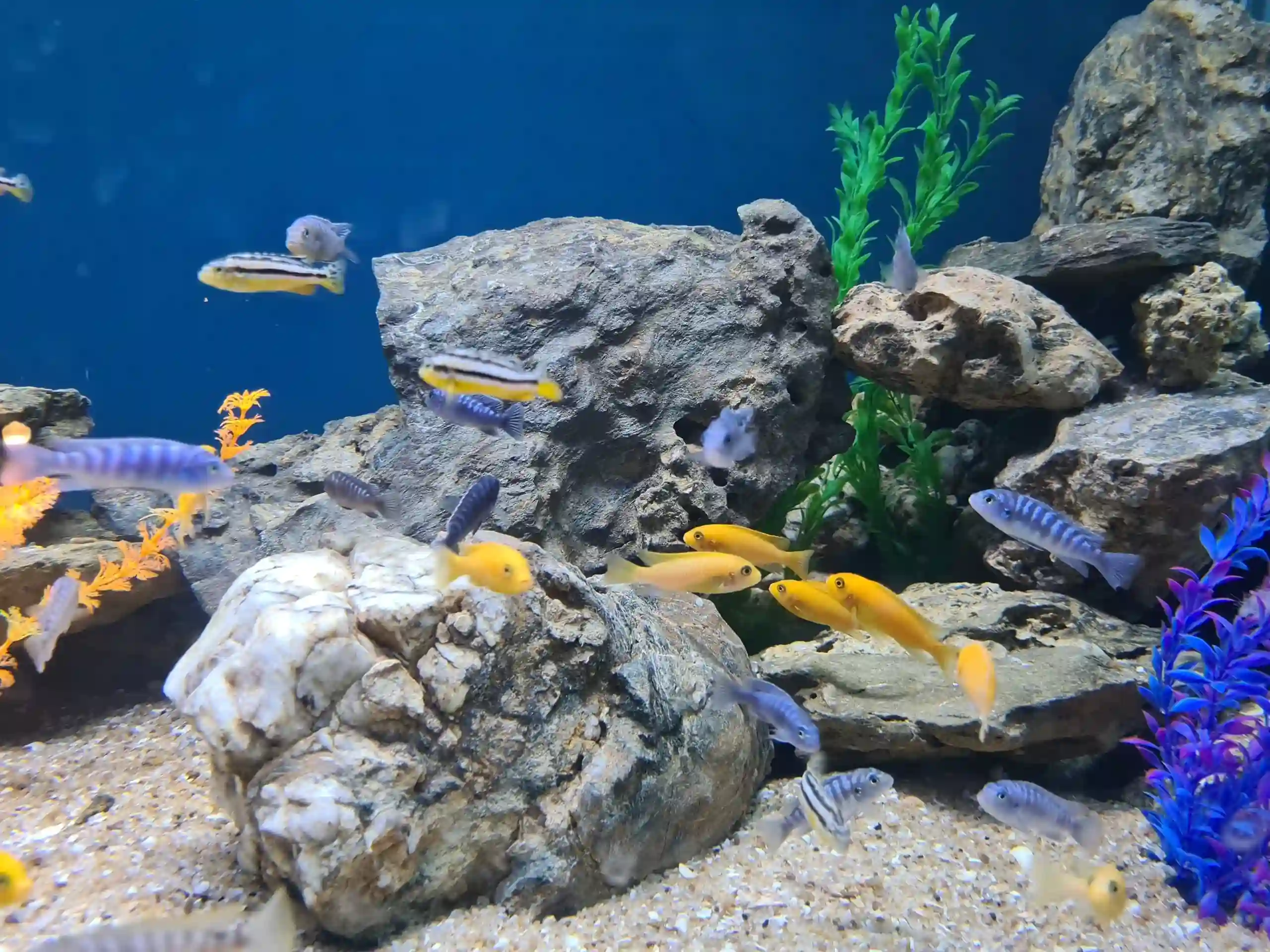
The Parrot Cichlid
● The parrot cichlid is also known as the blood parrot cichlid, is from the Cichlidae family and was first bred in Taiwan.
● They can grow up to 8 inches in length.
● These thrive in 24°-29°C temperatures and can live for 5-10 years.
● Being omnivores, they can consume flakes and pellets along with bloodworms and brine shrimp.
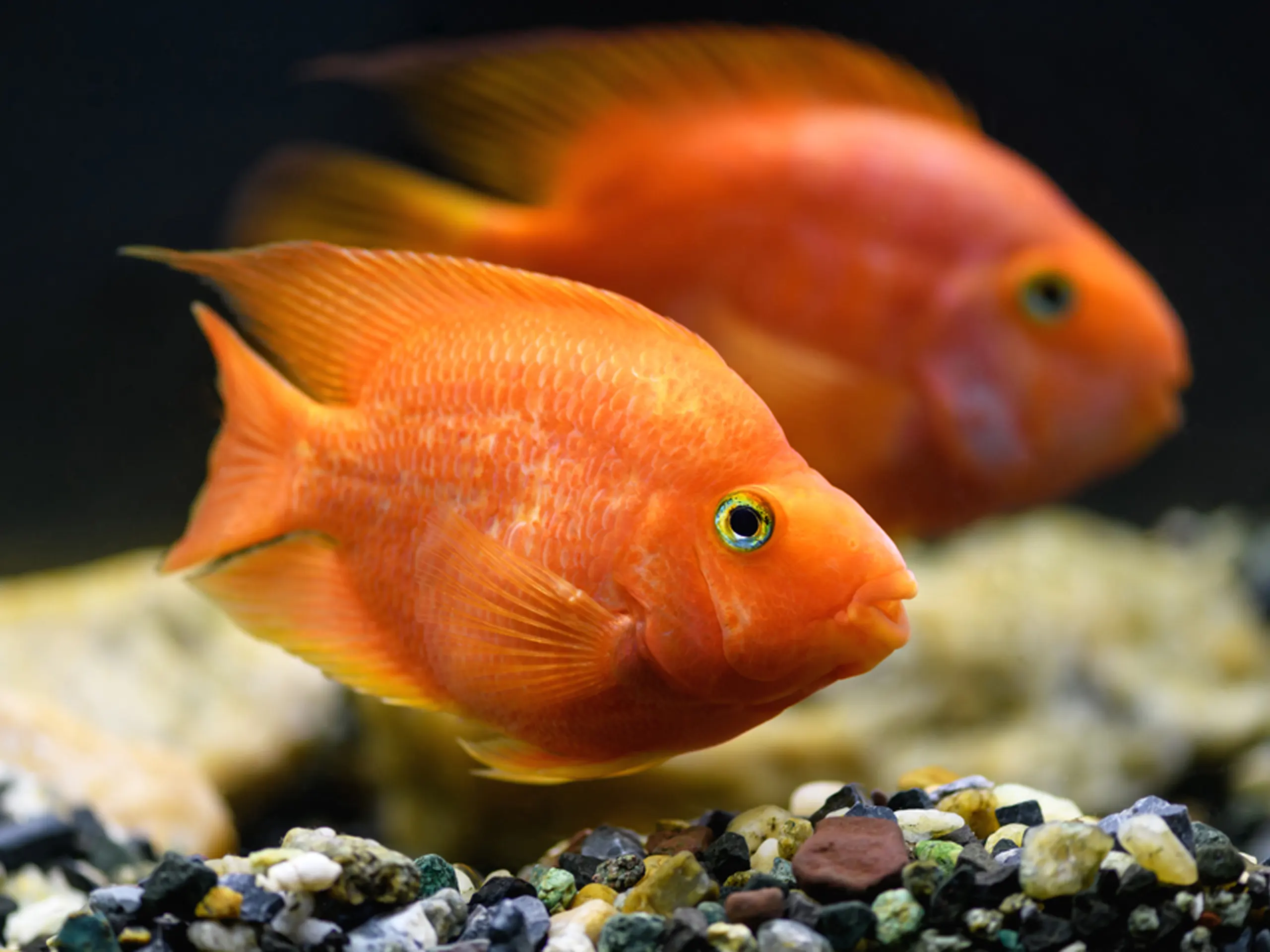
Tiger Barb Fish
● Also known as Sumatra barb, this fish belongs to the family Cyprinidae.
● Usually found in the Malay Peninsula, Sumatra and Borneo in Indonesia.
● Being a tropical fish, they prefer to live in temperatures between 25 – 27.8 degrees (Celsius).
● This species is usually omnivorous.
● Found in shallow water, the average life of the fish is seven years.
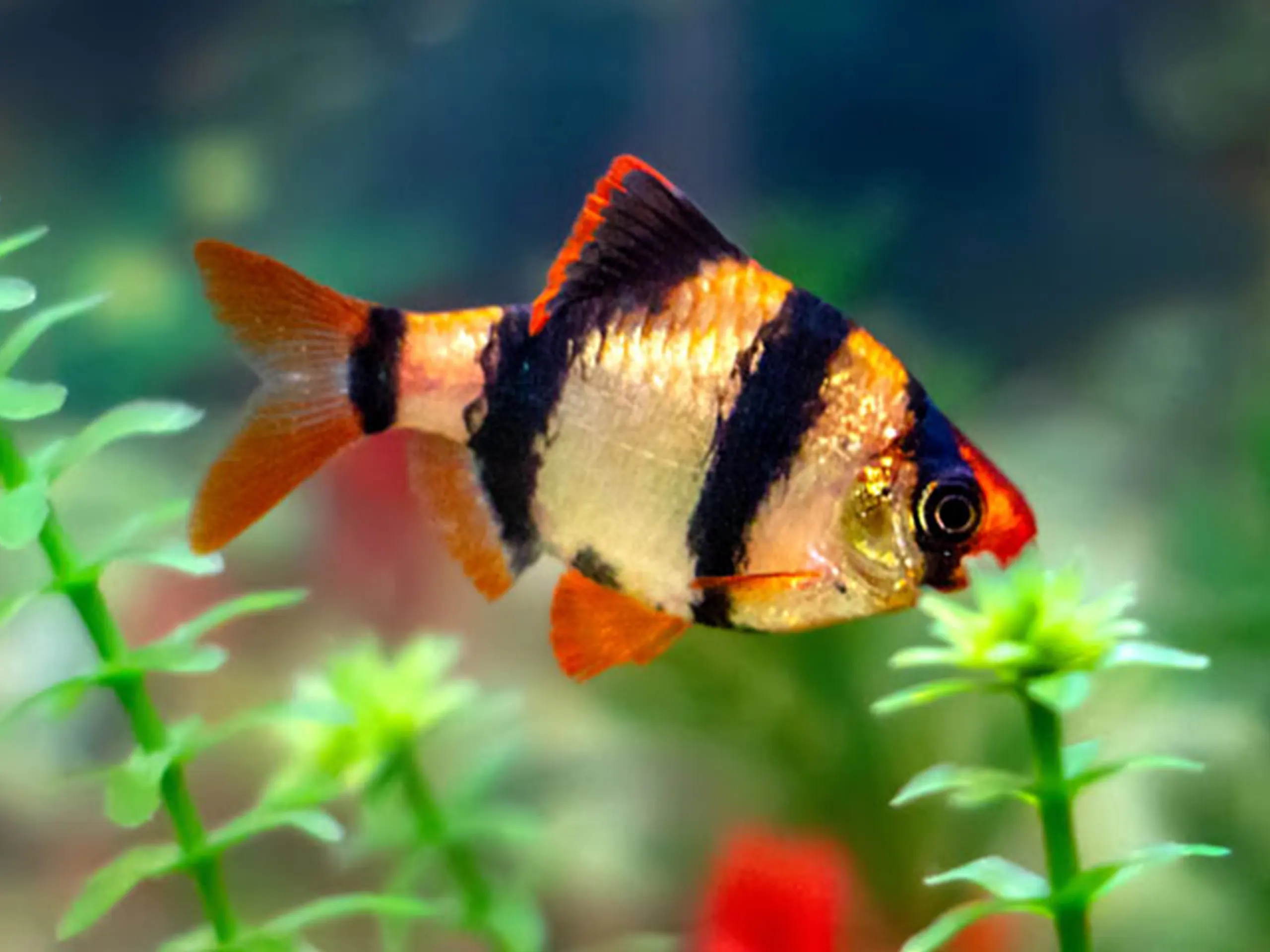
Flower Horn Fish
● Aggressive in nature.
● Another species from the Cichlidae family, this specimen is known for its vibrant colours.
● These are a hybrid variety, originally developed in Malaysia, Thailand and Taiwan.
● They usually consume insects, shrimps and bloodworms.
● Kept at 28-29 degrees (Celsius), the fish live for about 10-12 years.
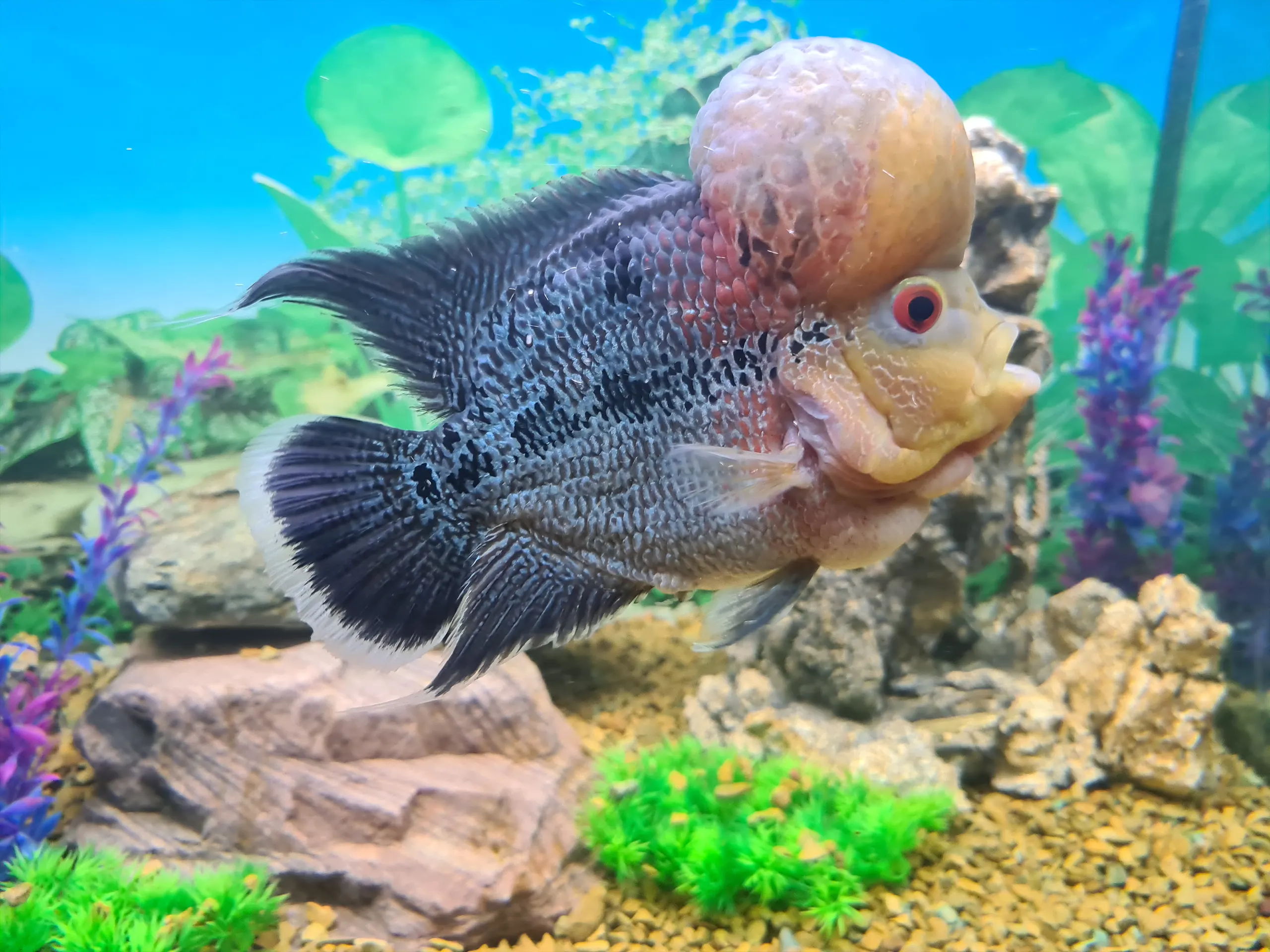
Angelfish (Black & White)
● Pterophyllum (Angelfish) is a freshwater fish, originating from the Orinoco basin, Amazon basin and Guiana shield in South America.
● This is also a colorful species with blue, black, gold, silver and platinum being the most common colors.
● Angelfish are primarily predators and prey on smaller fish, worms and microorganisms.
● Ideally kept at 28°C, the angelfish usually survives for 10 years.

Koi Pond Fish
● Koi fish, or specifically nishikigoi is named as such as it is coloured like a brocade.
● This species originated from Japan and is kept as an ornamental variety in koi ponds or water gardens.
● The ideal temperature ranges from 15°-25°C.
● Koi are omnivorous and can feed on peas, lettuce and watermelon.
● Koi fish can live up to 100-200 years but avg age is 50 years
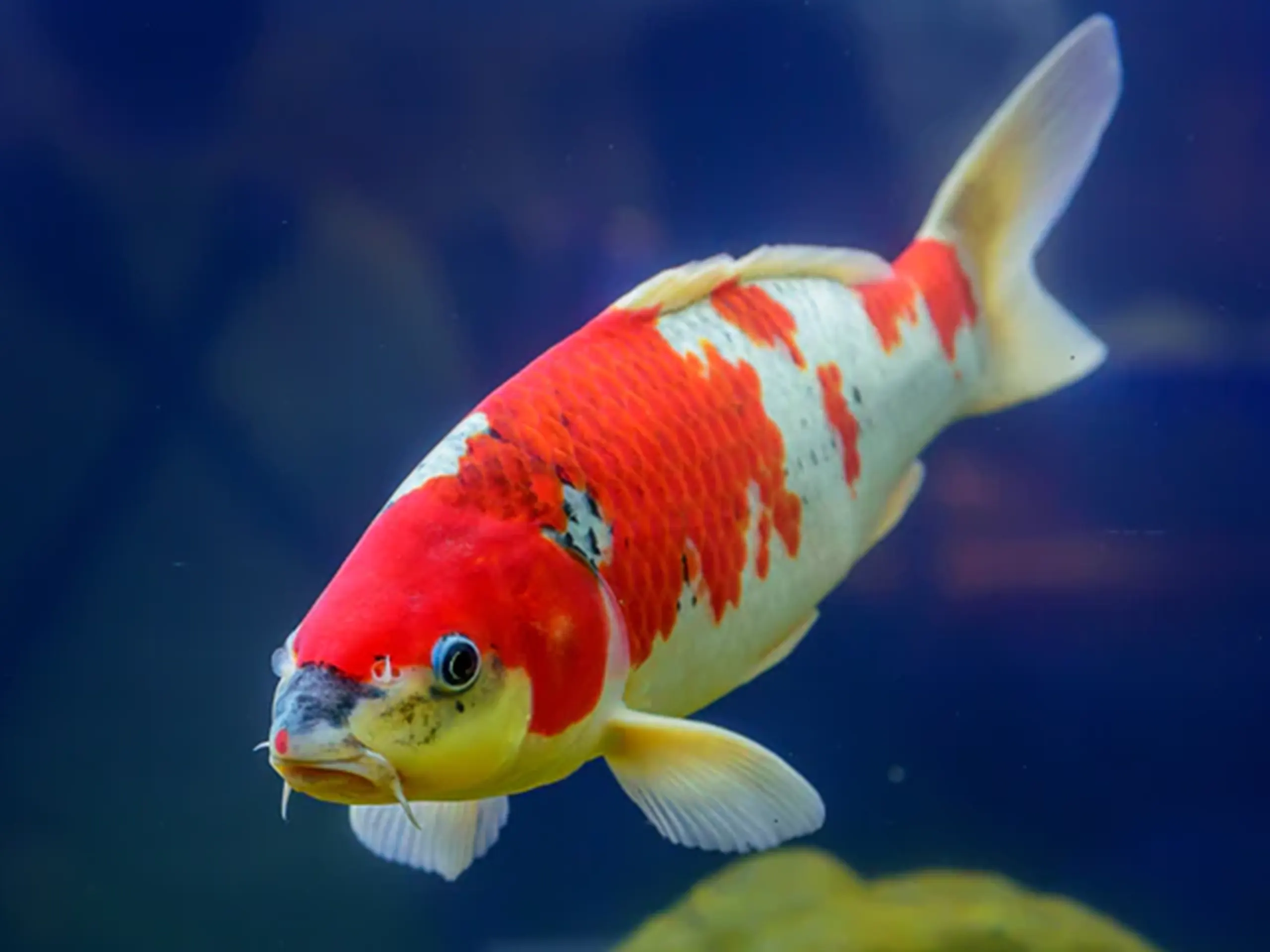
Black Ghost Knifefish
● This tropical fish is from the family Apteronotidae, originating in South America in freshwater habitats.
● These are nocturnal predators, possessing electric sensory organs to trace their prey.
● The avg size is 19 inches
● Black ghost knifefish thrive best in temperatures ranging from 22°C – 27°C.
● The life expectancy is around 10 years.
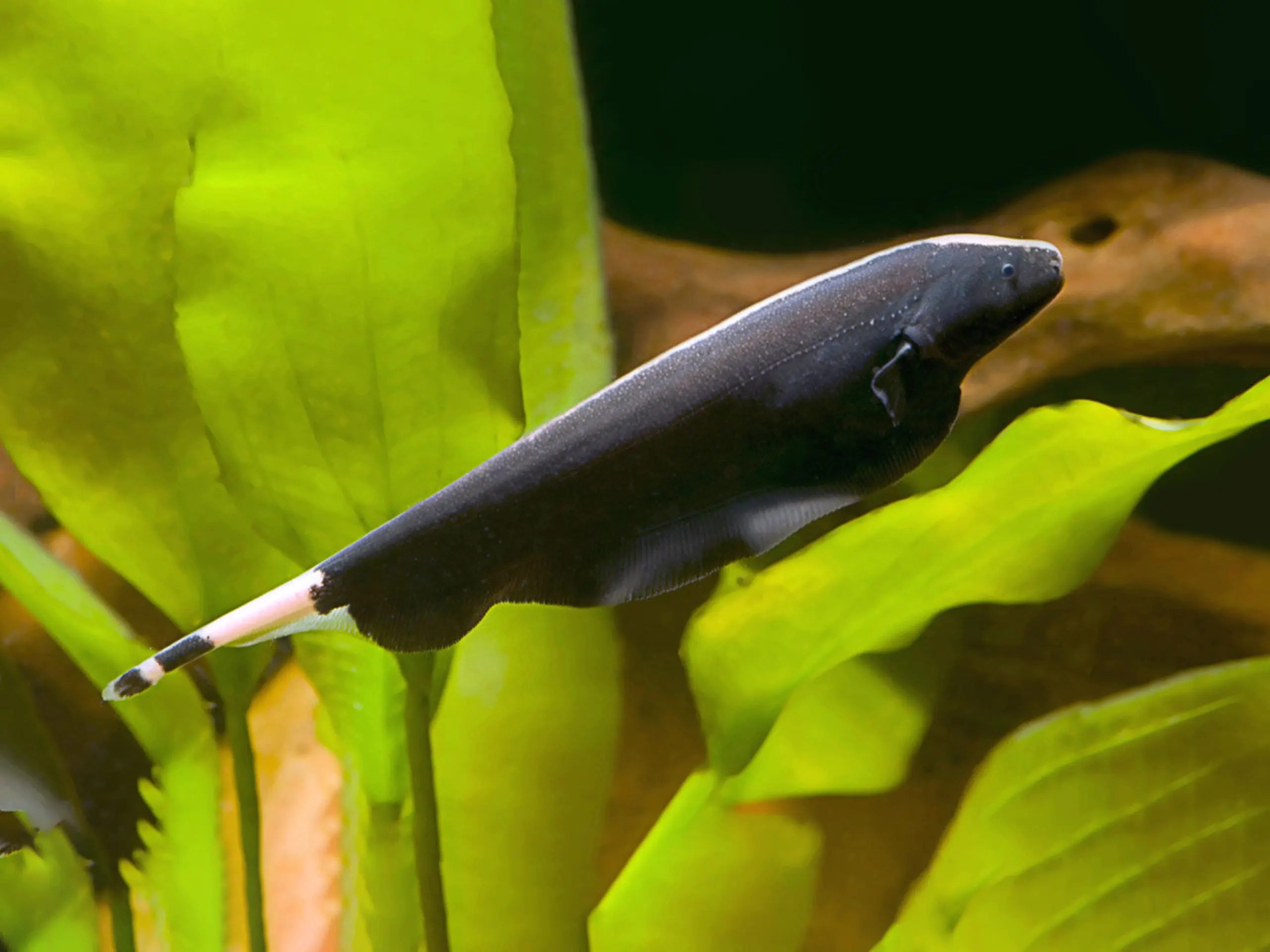
Pacu Piranha Fish
●Aggrasive in nature
●Group of 35 can finish a goat in 15 min
●This South American freshwater variety is from the family Serrasalmidae.
● Unlike piranha, the Pacu is omnivorous and mostly feeds on plants.
● They can usually reach a length of 2-3 ft.
● Usually kept at 24° – 27°C, some species of the fish are migratory.
● The average lifespan is around 15-20 years.
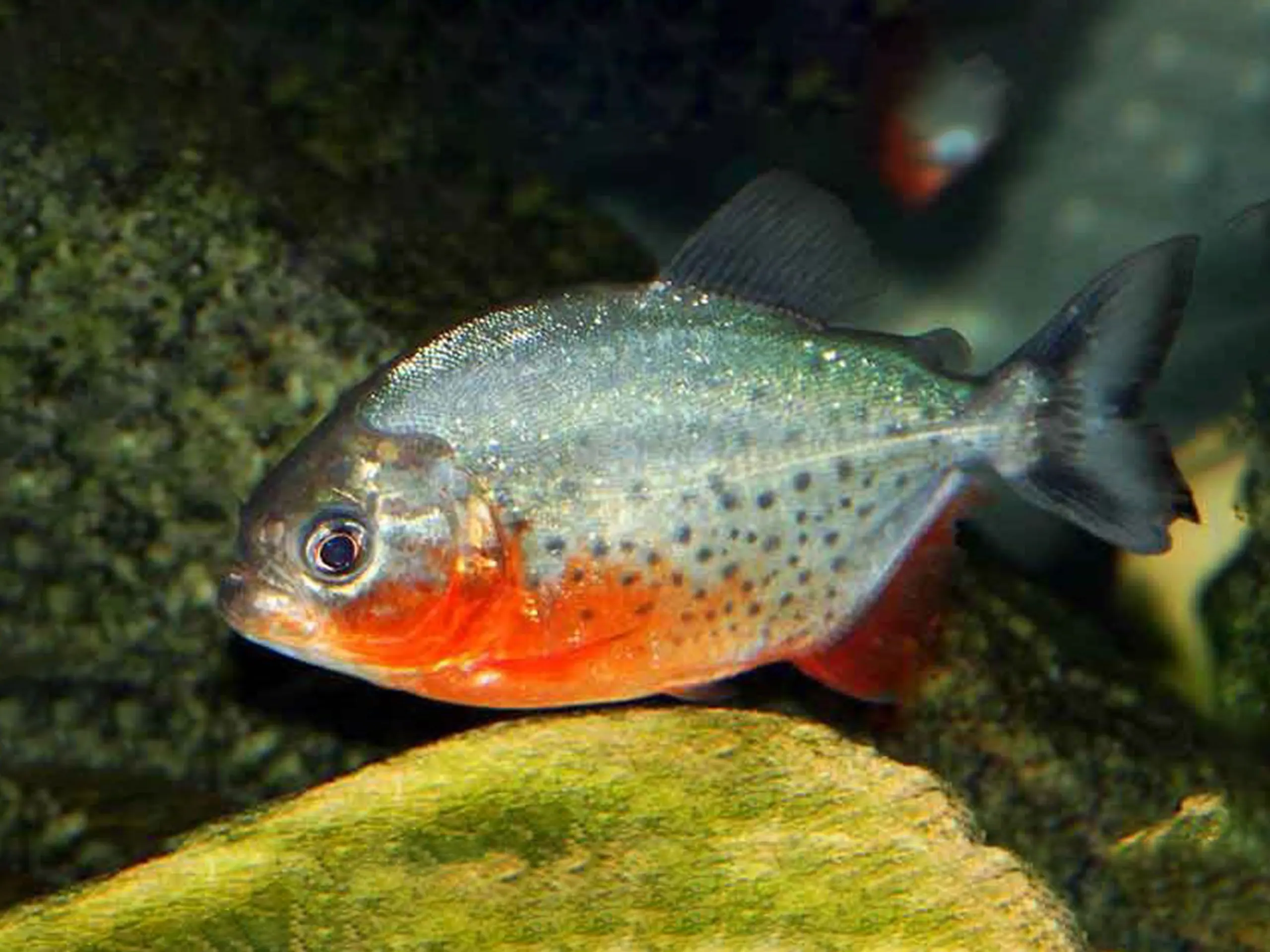
Eel Asian Swamp
●Love to stay and hide in rocks
● The Asian swamp eel, also known as rice eel, is from the family Synbranchidae.
● The Asian swamp eel is found in East and Southeast Asia.
● It usually feeds on smaller fish, shrimp, worms and insects.
● This is an air-breathing variety and can directly obtain oxygen from air and can survive in muddy environments.
● The ideal temperature at which they thrive ranges from 25°-31°C.
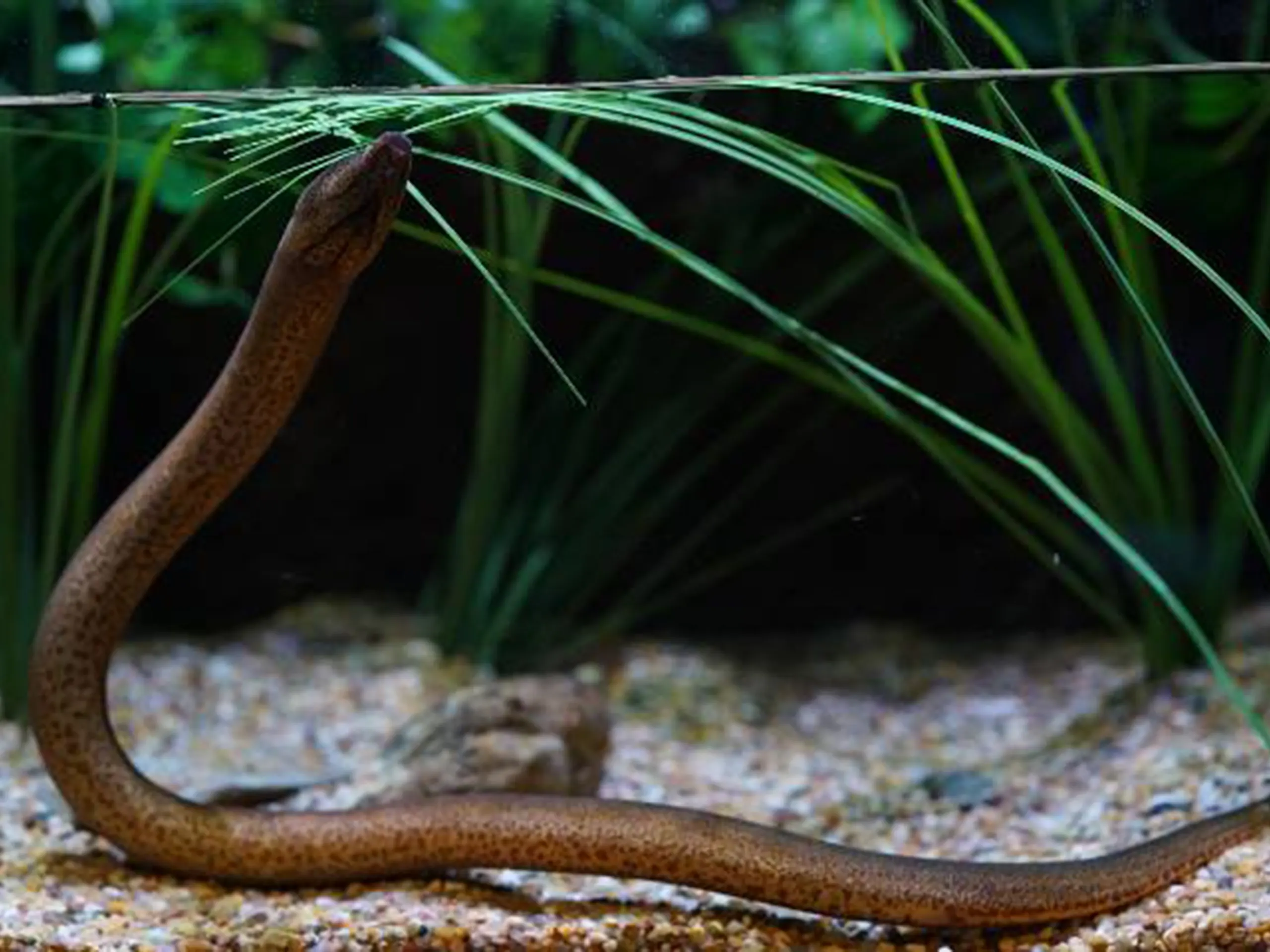
Alligator Gar Fish
● The biggest species in the gar family, the alligator gar has been named as such because of its close resemblance to the american alligator.
● Commonly found in southern portions of US and in Mexico, this is one of the largest freshwater fish in North America.
● Measuring about 6ft usually and weighing over 45 kg, they survive for 50-70 years.
● These are primarily predators and usually prey on fishes, ducks and small mammals.
● The alligator gar also possesses a lung-like organ apart from gills which assists them to breathe in air.
● The biggest species in the gar family, the alligator gar has been named as such because of its close resemblance to the american alligator.
● Commonly found in southern portions of US and in Mexico, this is one of the largest freshwater fish in North America.
● Measuring about 6ft usually and weighing over 45 kg, they survive for 50-70 years.
● These are primarily predators and usually prey on fishes, ducks and small mammals.
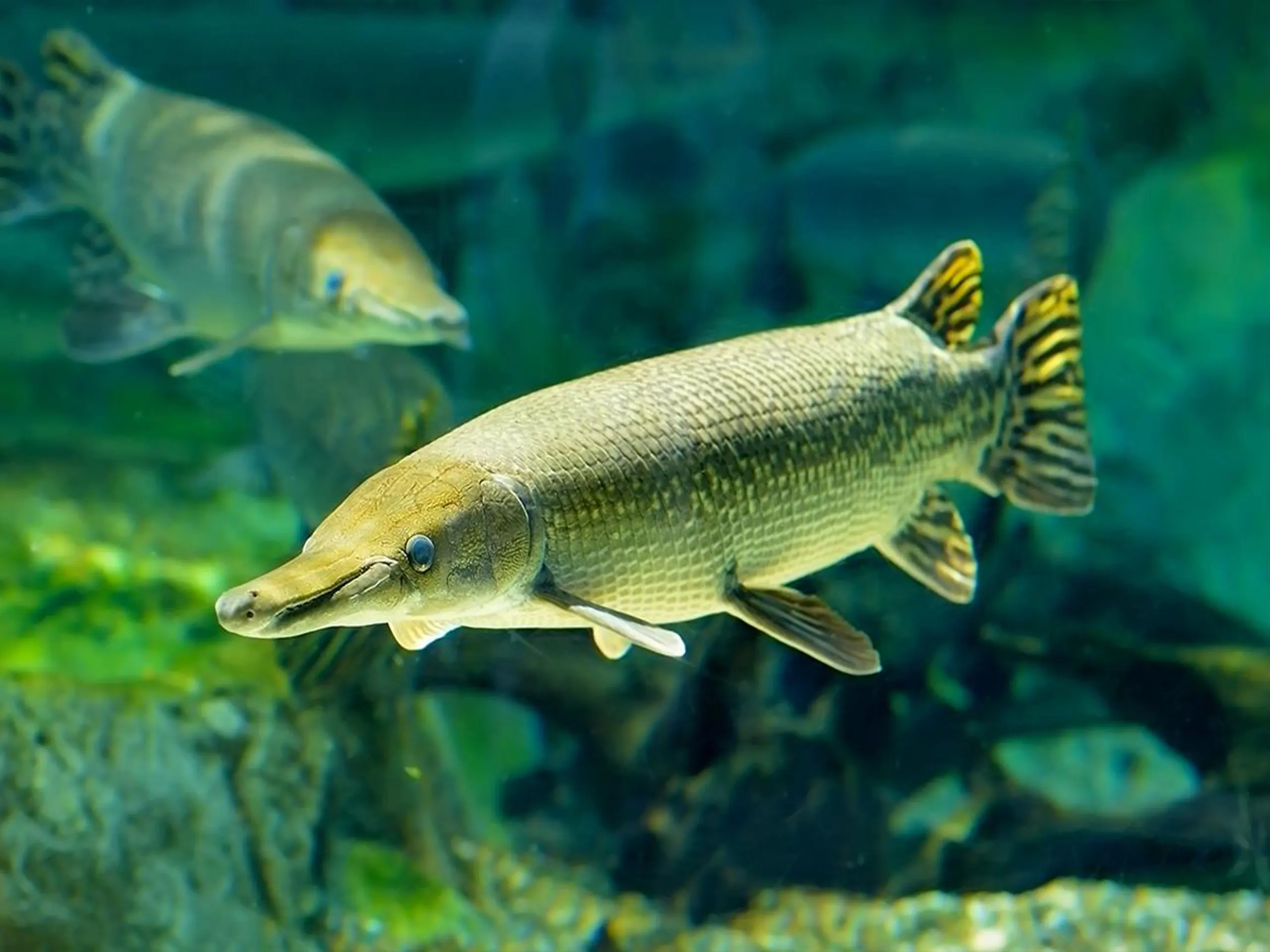
Molly Fish (Ballon & Black )with Live Amazon Plants
● The Common Molly (Poecilia), of the family Poeciliidae, is also known as short-finned molly and is predominantly found in Mexico.
● This is a highly adaptable species and can survive in freshwater as well as marine waters.
● They usually measure between 8 cm to 12 cm
● Balloon mollies are usually kept at 22° – 25°C and live for 3-5 years.
● The black mollies survive in a temperature ranging from 21°-26°C and can survive for about 3 – 5 years.
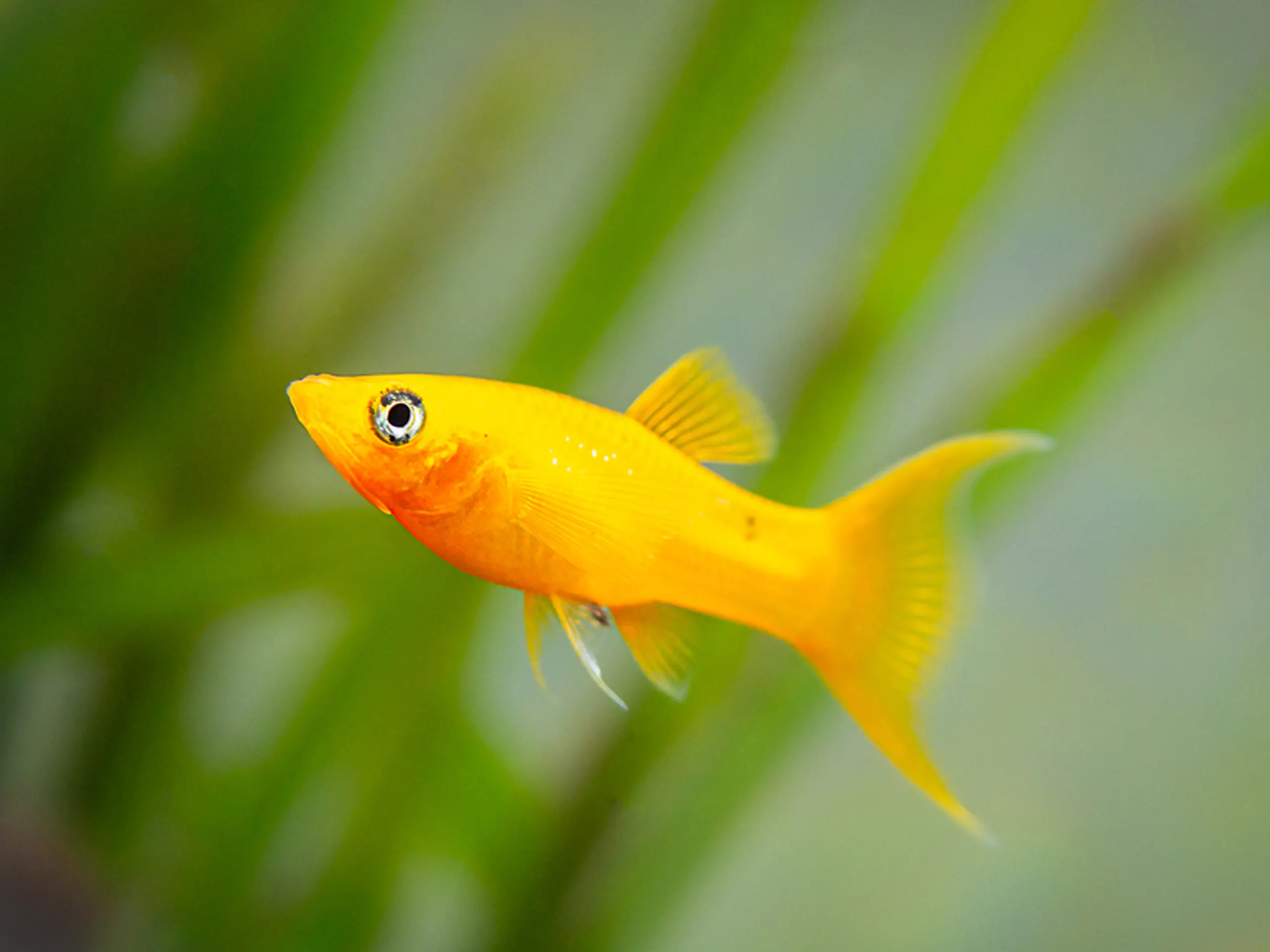
Goldfish
● Goldfish is a freshwater fish variety, from the Cyprinidae family and is natively found in East Asia.
● Diverse colouration – white, brown, orange, red, yellow and black, have been observed.
● Goldfish can measure up to 14 inches.
● Goldfish have quite developed vision and hearing organs and also have a good memory span.
● Ideal temperature for the fish is 20°-23°C and they are omnivorous by nature, feeding on insects, worms and smaller fish.
● Shubunkin is a hybrid variety of goldfish, a cross between the common goldfish and the comet goldfish.
● It is native to Japan and it is named so as it resembles a vermilion brocade.
● Shubunkins can grow up to 9-18 inches in length and live for about 10-15 years.
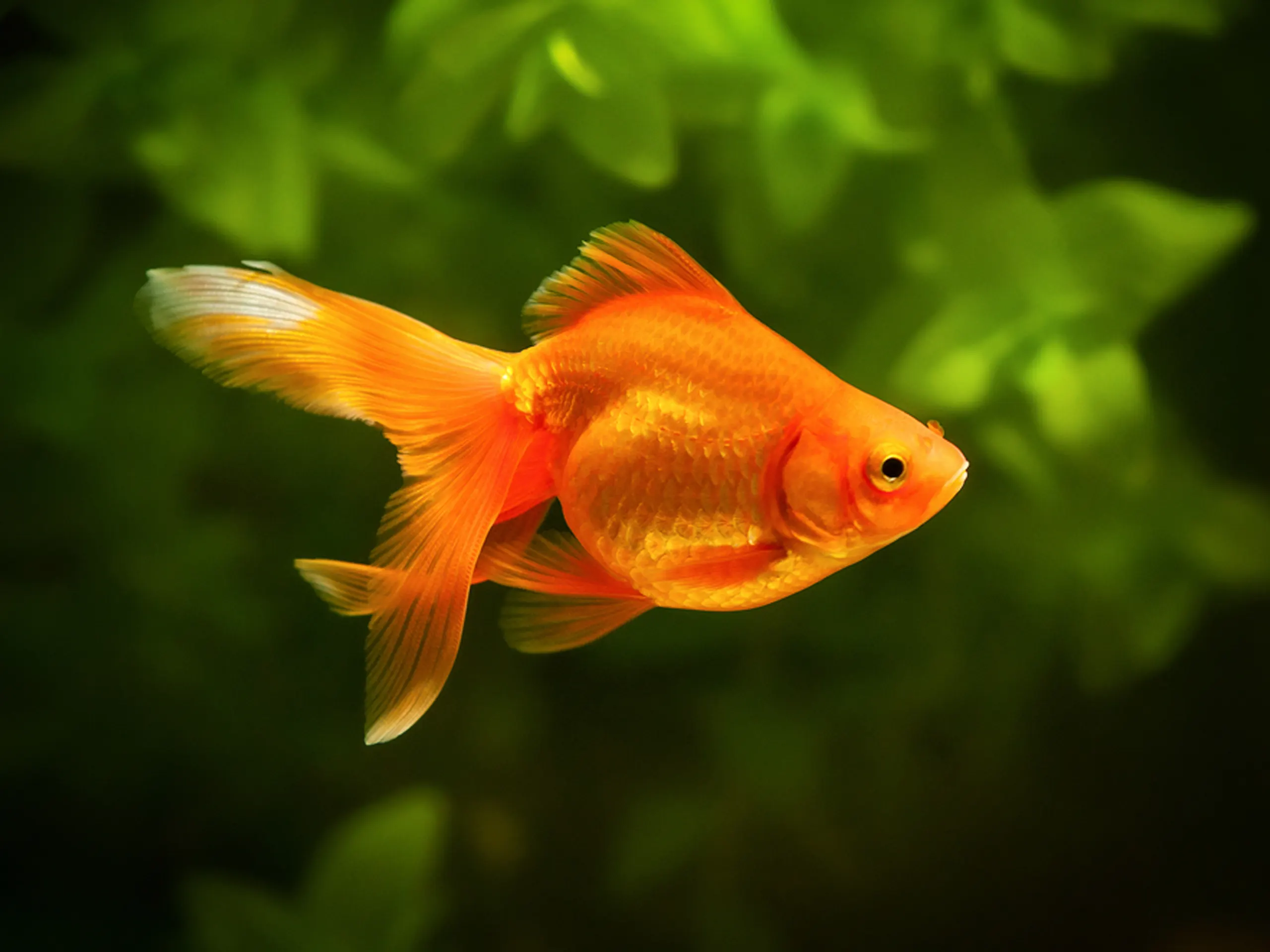
Silver Knife Fish
● This tropical fish is from the family Apteronotidae, originating in South America in freshwater habitats.
● These are nocturnal predators, possessing electric sensory organs to trace their prey.
● The average size is 19 inches
● Knifefish thrive best in temperatures ranging from 22°C – 27°C.
● The life expectancy is around 10 years.
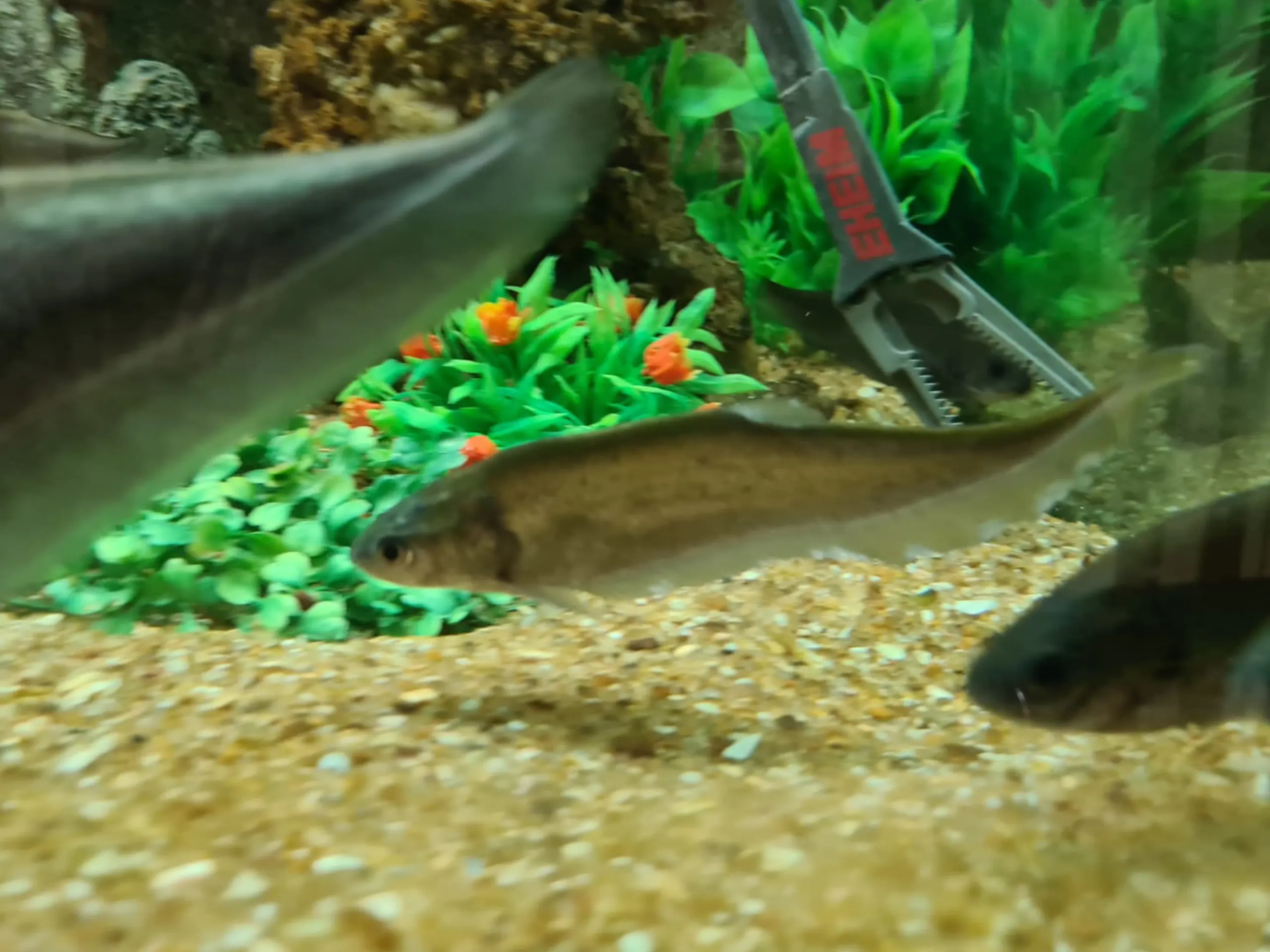
Shubunkins Fish
●Type of Goldfish variety, from the Cyprinidae family and is natively found in East Asia.
● Diverse colouration – white, brown, orange, red, yellow and black, have been observed.
● Goldfish can measure up to 14 inches.
● Goldfish have quite developed vision and hearing organs and also have a good memory span.
● Ideal temperature for the fish is 20°-23°C and they are omnivorous by nature, feeding on insects, worms and smaller fish.
● Shubunkin is a hybrid variety of goldfish, a cross between the common goldfish and the comet goldfish.
● It is native to Japan and it is named so as it resembles a vermilion brocade. Shubunkins can grow up to 9-18 inches in length and live for about 10-15 years.
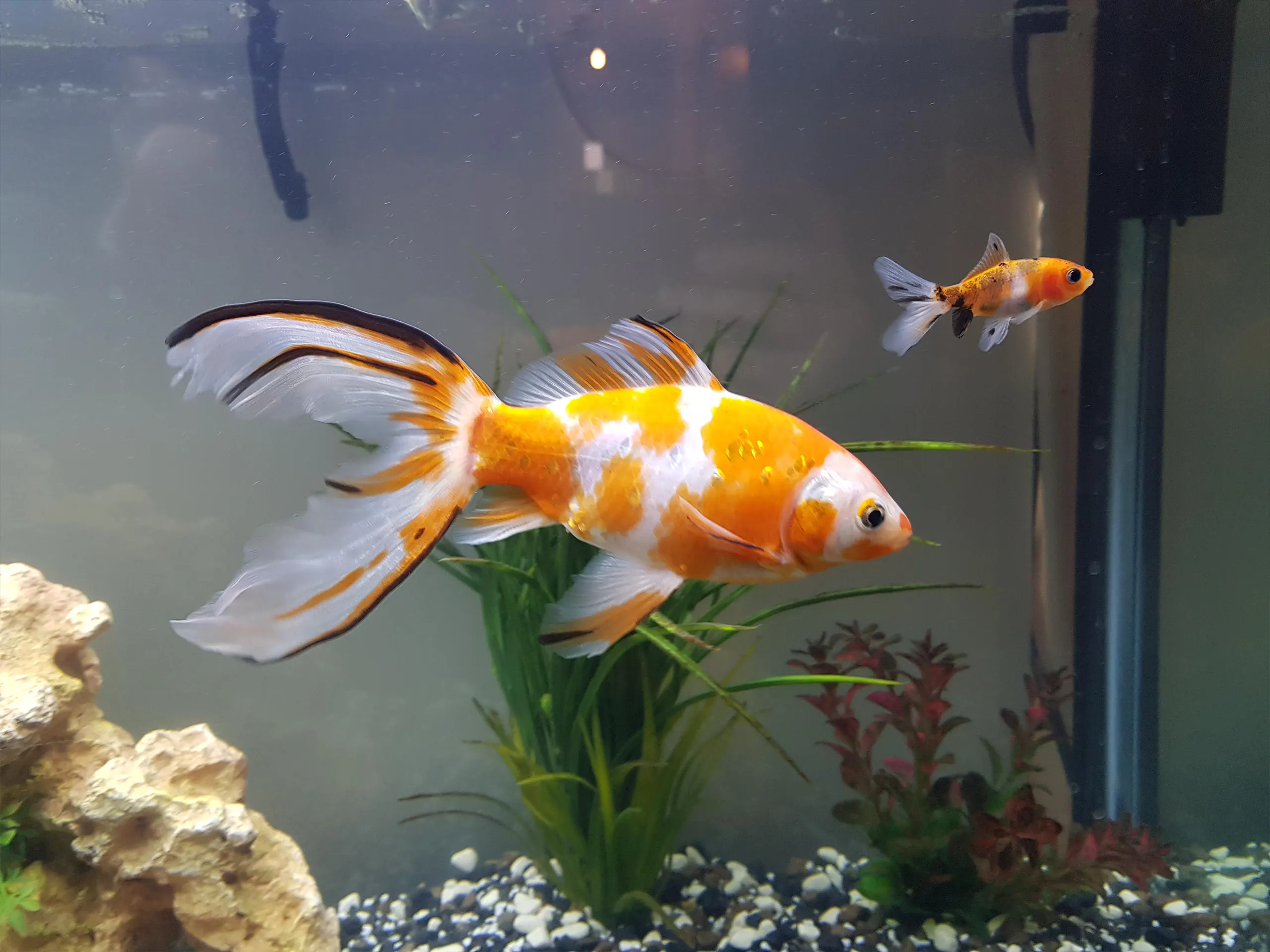
Silver Arowana
● The silver arowana, of the family Osteoglossidae, is native to South America.
● It is a freshwater species and can grow up to a length of 3 ft
● The species is predatory by nature and is also called monkey fish as the fish can jump out of water to capture the prey, and usually feed on insects, smaller fish and crustaceans.
● The ideal temperature for them to survive is 24°-28°C and usually live for 10-15 years.
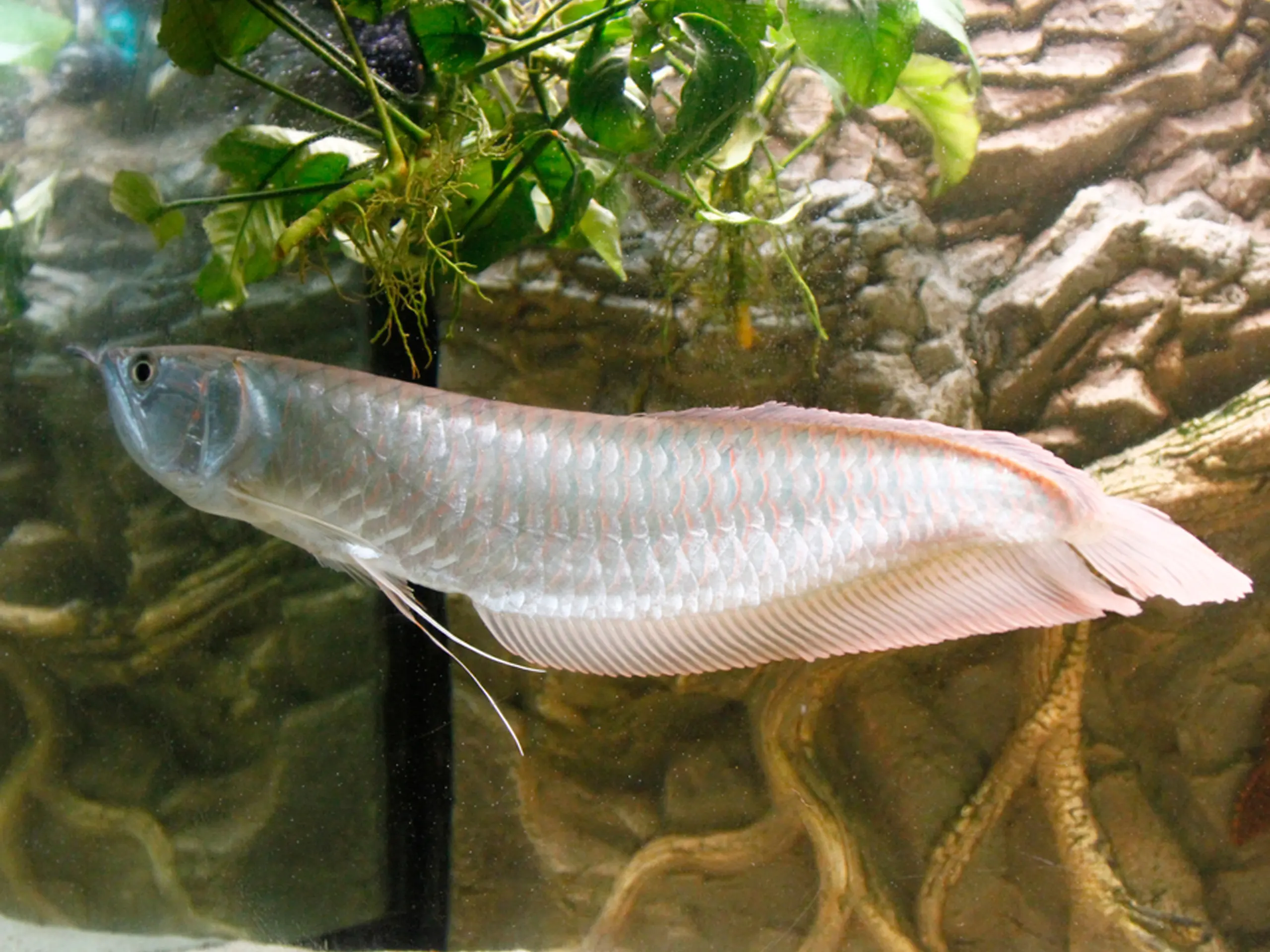
Walking catfish (Lazy Catfish )
● The walking catfish (Clarias batrachus), is a freshwater species native to Southeast Asia.
● It is able to move, walk or wiggle across land in search of food, hence its name.
● Commonly live in swamps, stagnant waters and muddy areas.
● It reaches a length of around 1.6 ft and its skin is covered with mucus.
● As it is an omnivorous species, it feeds on smaller fish, organisms and aquatic weeds.
● They are kept at a temperature ranging from 20°-26°C.
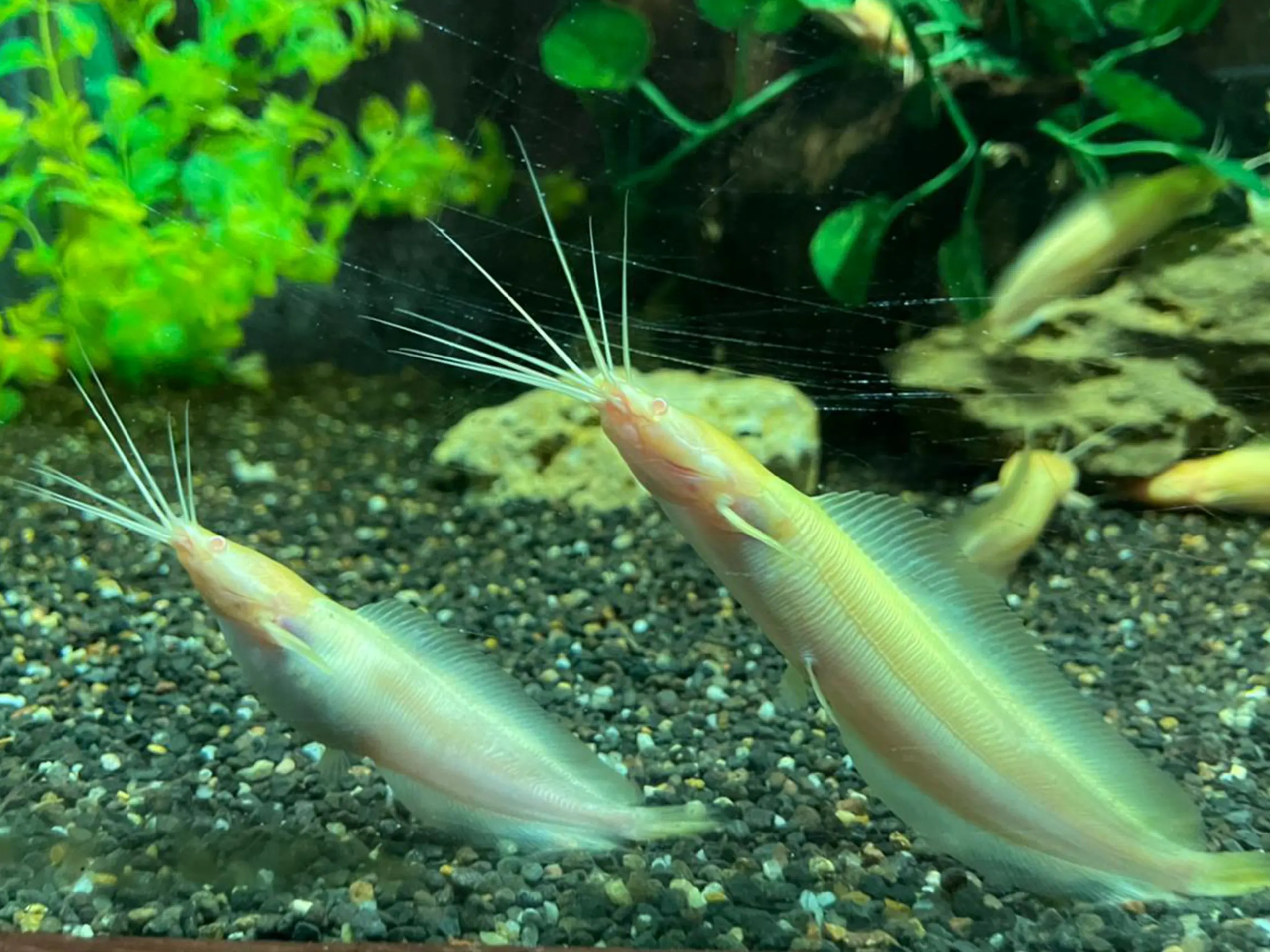
Neon Acara
● Neon acara (Andinoacara pulcher) also belongs to the cichlid family and is found in freshwater regions.
● These are native to Venezuela and Trinidad.
● They’re named ‘pulcher’ after the Latin word pulcher meaning beautiful, as they are strikingly coloured.
● They grow up to 16 inches and live in tropical climates and thrive in 22°-30°C temperatures.
● They’re predators and feed on bloodworms, earthworms and insects.
● They have a lifespan of about 10 years.
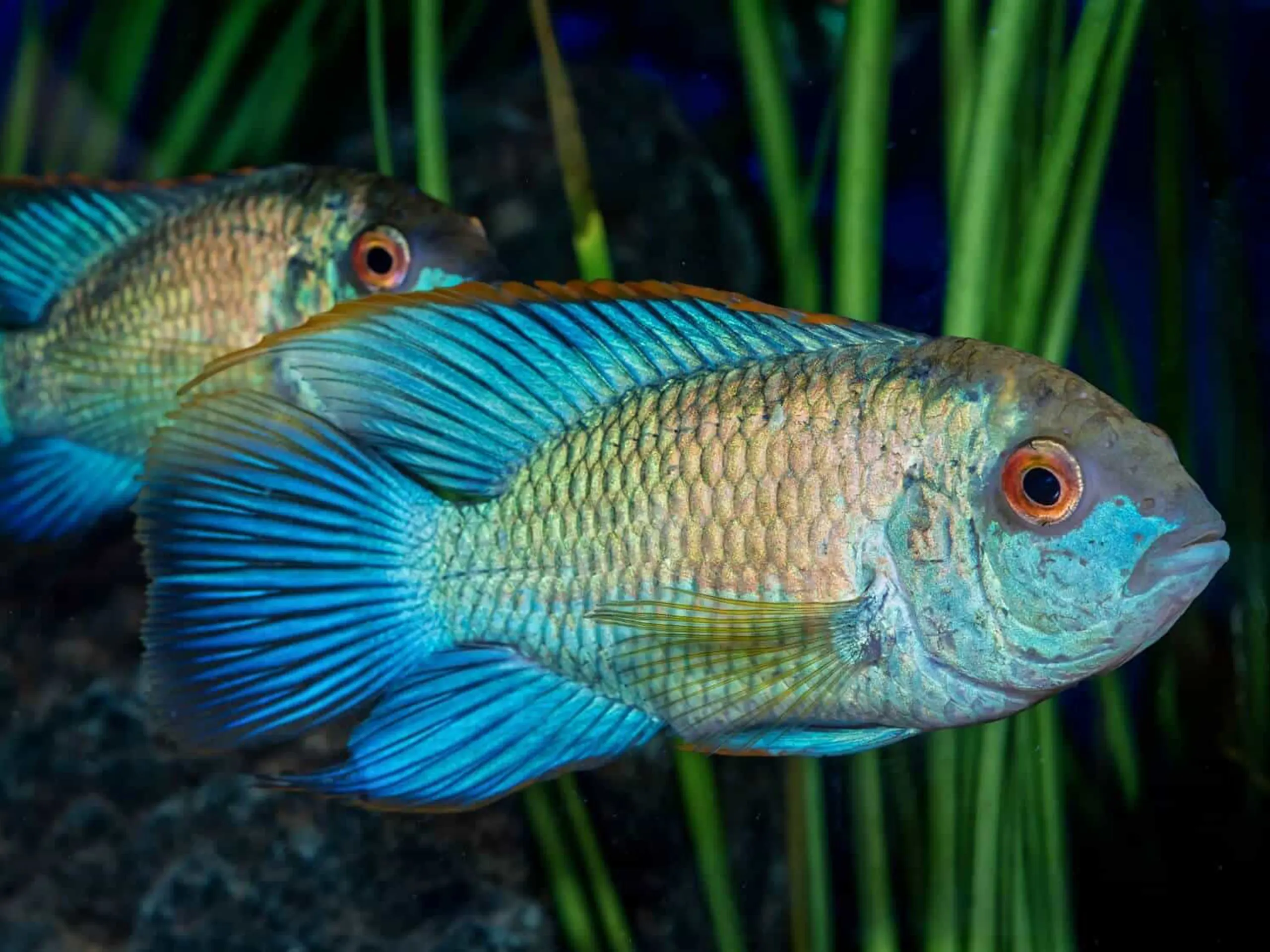
Red Tailed Shark
● The red tailed shark, also known as red tailed black shark, is of the family Cyprinidae.
● It is a freshwater species and originated from Thailand and is under the critically endangered status as per IUCN.
● It can grow up to be 6 inches in size and has a lifespan of 5-8 years.
● It can live in temperatures between 22°-26°C and being an omnivore, feeds on aquatic plants, small insects and crustaceans
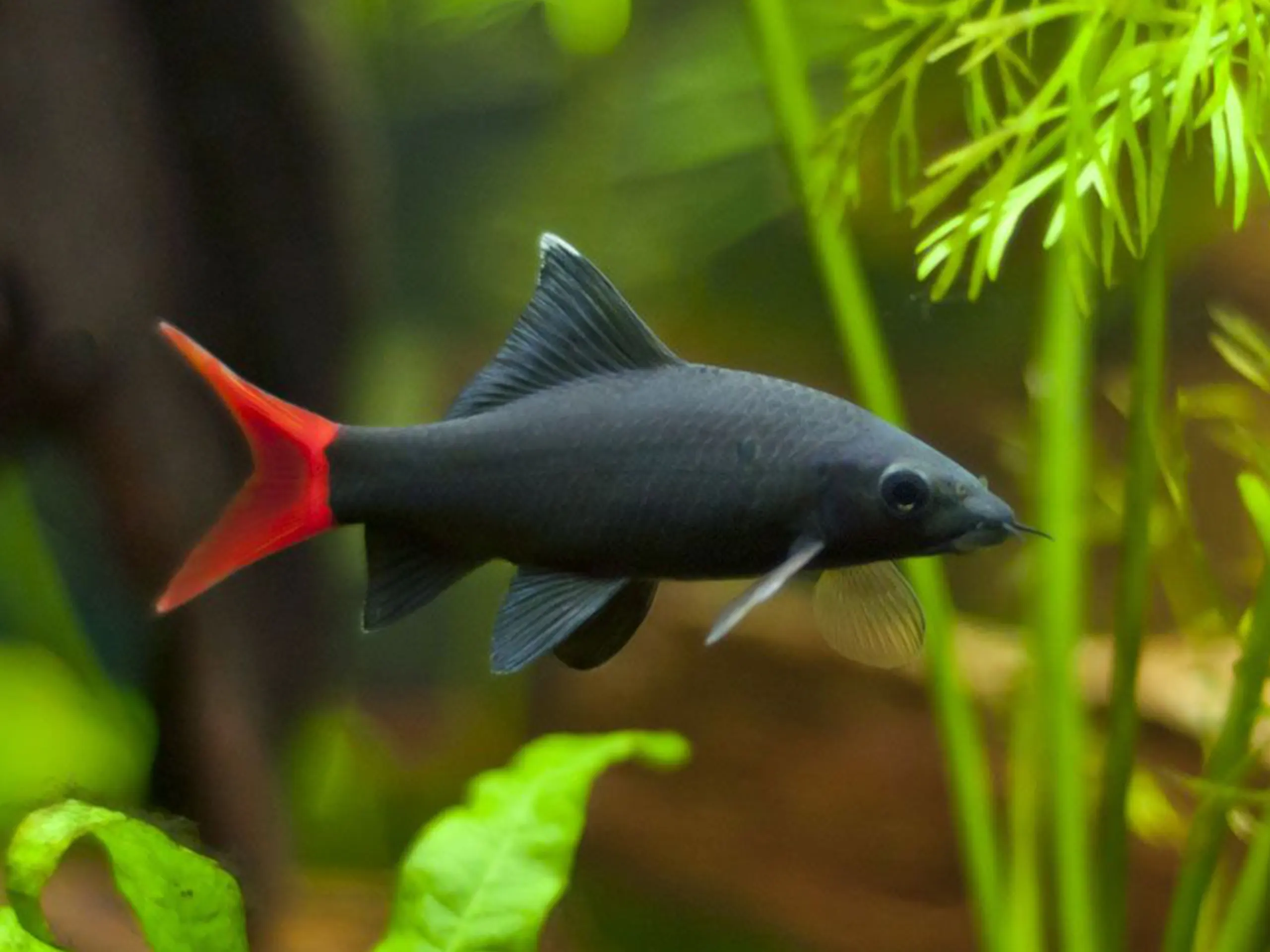
Tin Foil Barb
● The tin foil barb is another species from the Cyprinidae family and is a tropical freshwater fish.
● It is primarily found in Southeast Asia – Thailand, Sumatra, Borneo and Malayan peninsula.
● It grows up to 14 inches in length and has an average lifespan of 10-15 years.
● It is kept at temperatures ranging from 22°-25°C.
● It is mainly herbivorous, feeding on aquatic weeds, plants and algae, but occasionally might feed on smaller worms and fishes.
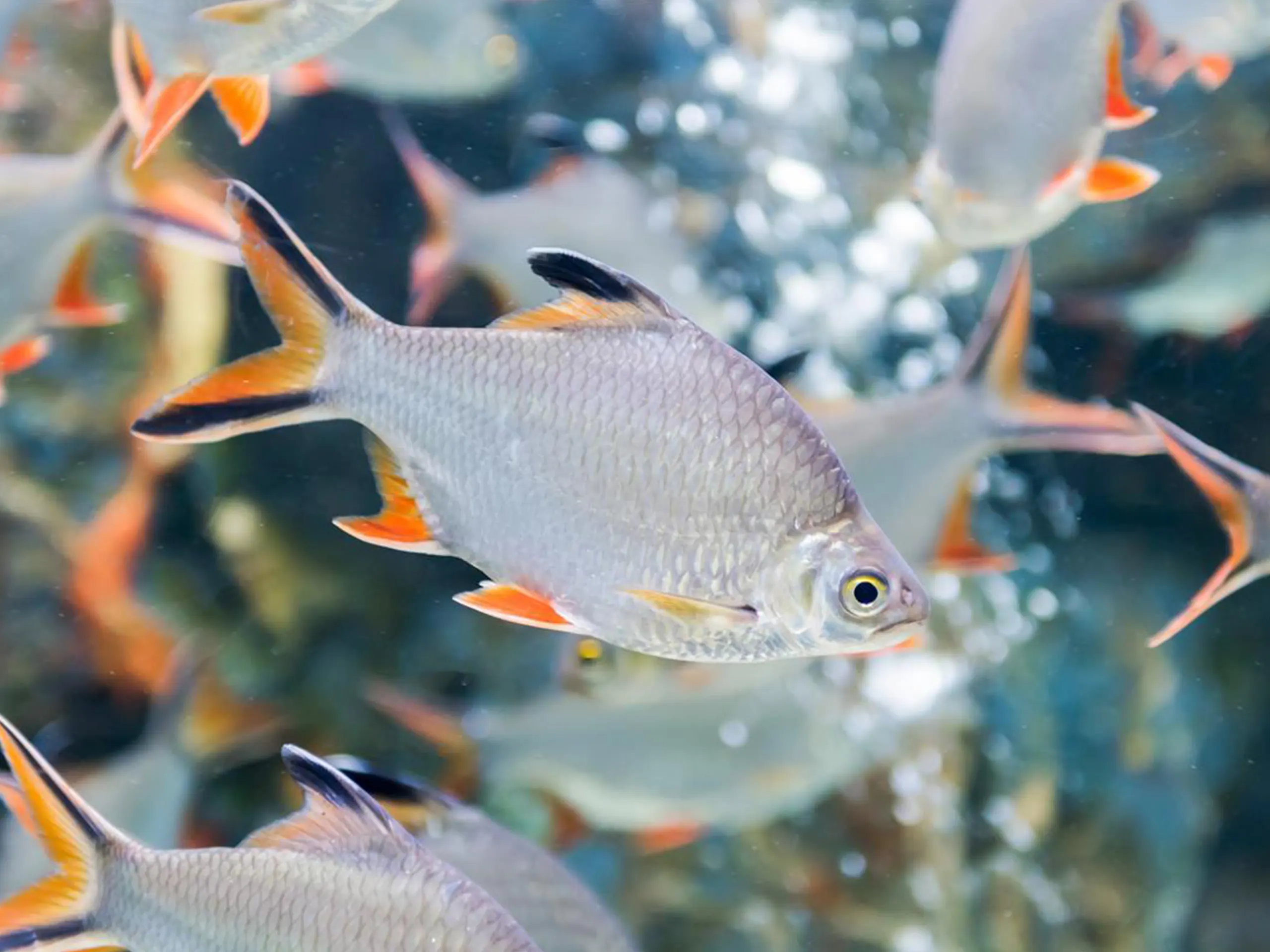
Red Cap Goldfish
● Red cap goldfish also known as red cap oranda, was originally from China.
● The name ‘oranda’ comes from the name Holland lion mask, which was given because it was incorrectly identified as native to the Netherlands.
● The oranda has a bubble-like growth on the top of the head, which is its characteristic feature.
● The oranda can reach a length of around 8-12 inches.
● They live in a temperature between 17°-28°C and usually feed on brine shrimps, goldfish flakes, and duckweed.
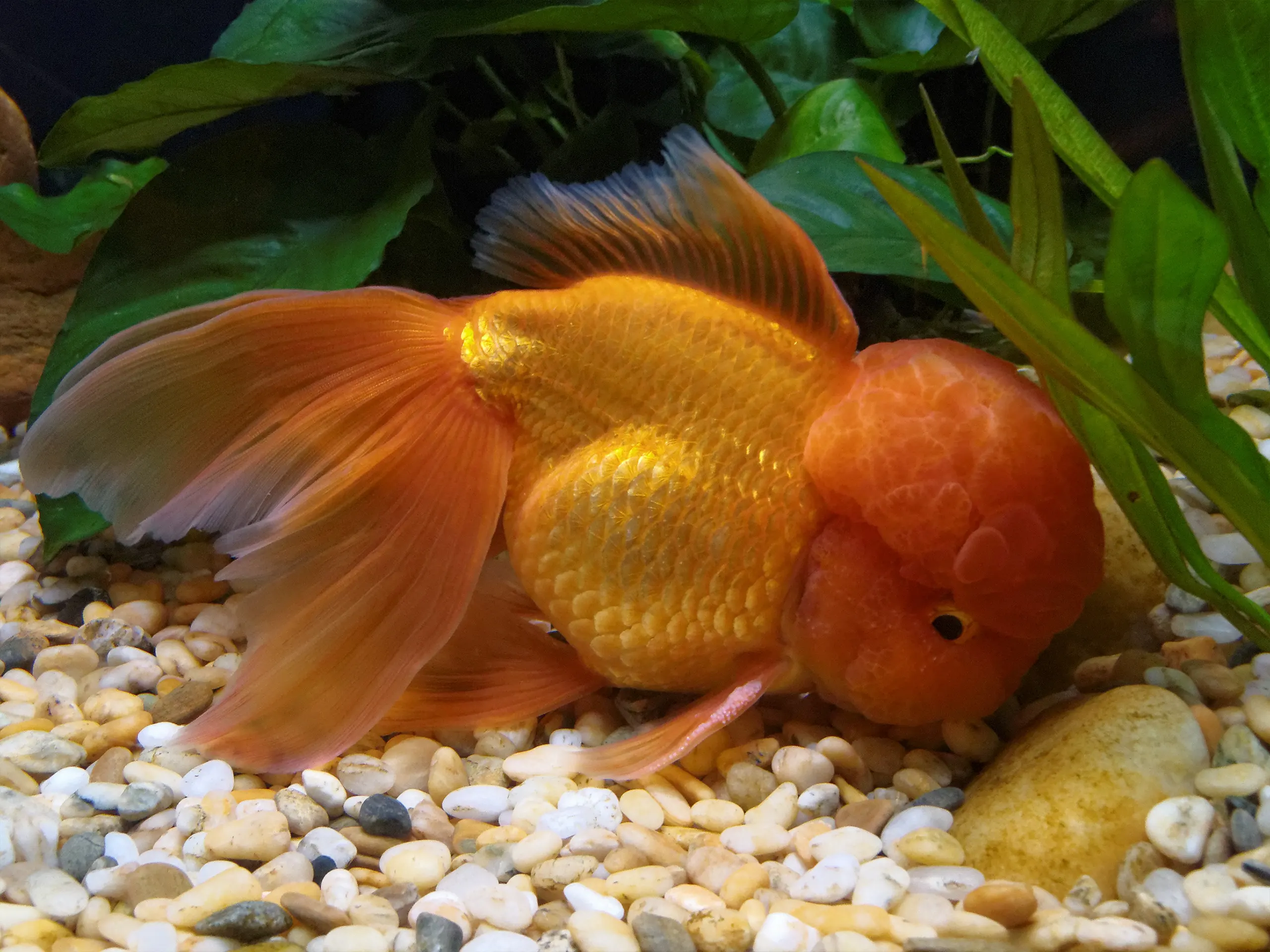
Albino & Tiger Rainbow Shark
● Goldfish is a freshwater fish variety, from the Cyprinidae family and is natively found in East Asia.
● Diverse colouration – white, brown, orange, red, yellow and black, have been observed.
● Goldfish can measure up to 14 inches.
● Goldfish have quite developed vision and hearing organs and also have a good memory span.
● Ideal temperature for the fish is 20°-23°C and they are omnivorous by nature, feeding on insects, worms and smaller fish.
● Shubunkin is a hybrid variety of goldfish, a cross between the common goldfish and the comet goldfish.
● It is native to Japan and it is named so as it resembles a vermilion brocade.
● Shubunkins can grow up to 9-18 inches in length and live for about 10-15 years.
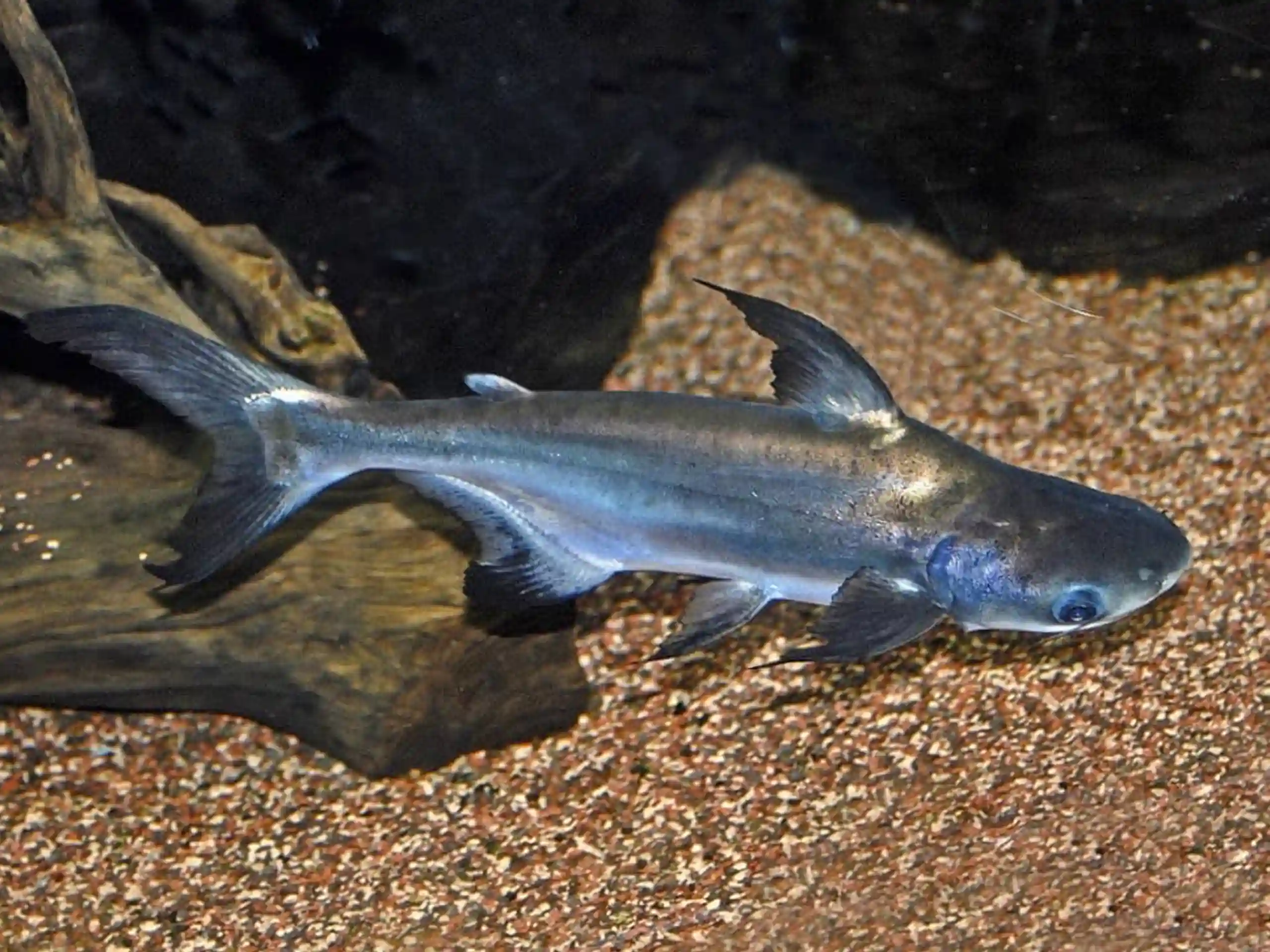
Firemouth Cichlid
● The firemouth cichlid is of the family Cichlidae.
● It is native to Central America – Mexico, Yucatán peninsula, Guatemala.
● It got its name from the bright orange-red colour on the underside of its jaw.
● The species lives in tropical climates, in a temperature between 23°-30°C.
● These are omnivores and feed on spirulina, algae and bloodworms.
● They can reach a length of 15cm and can live for around 10 years.
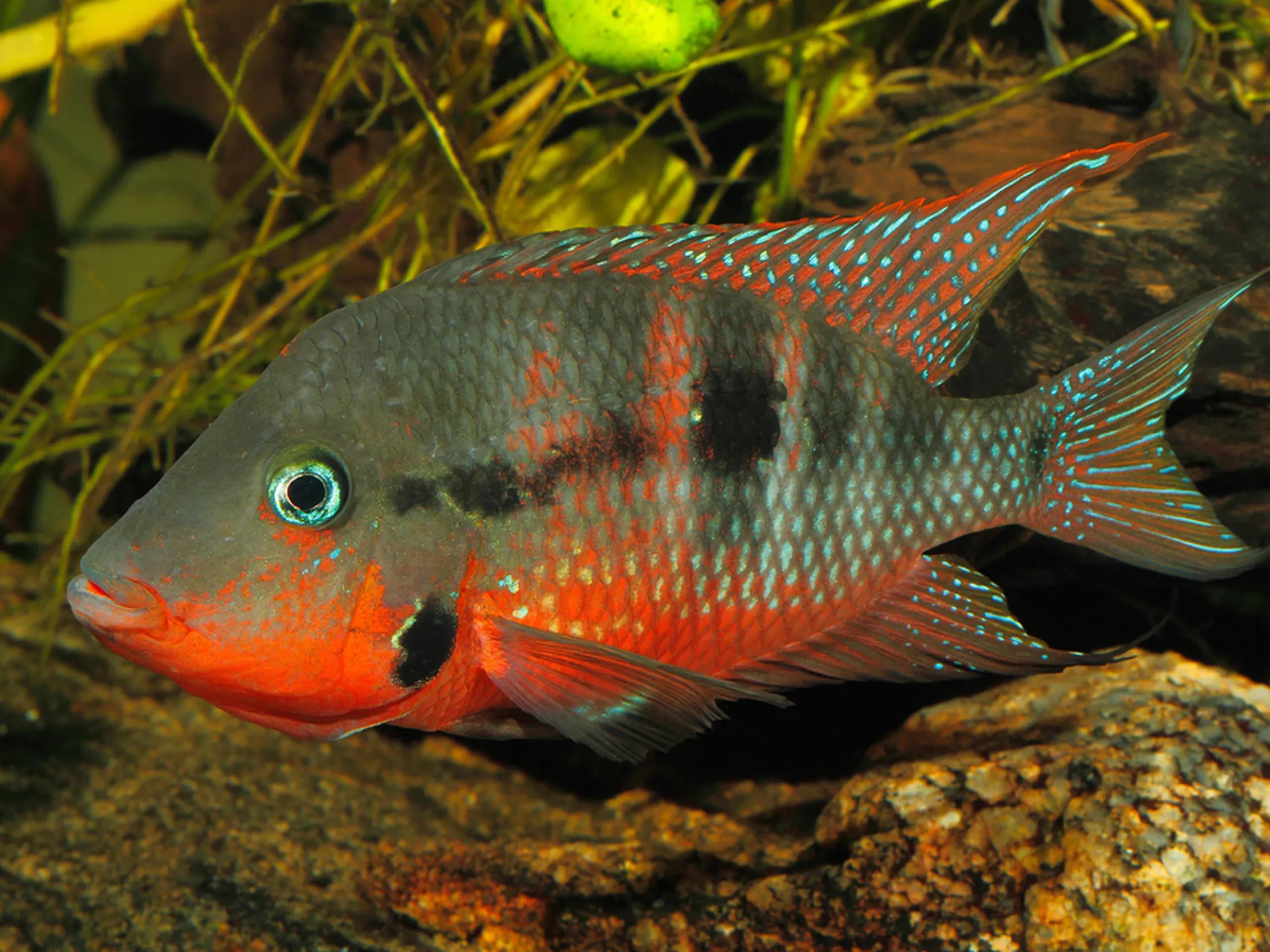
Kissing Gourami
● When they are aggressive they make pout and fight like they kissing
● Kissing gourami, also known as kissing fish is a freshwater species of the Helostomatidae family.
● These originated from Thailand and Indonesia.
● This species is also popularly consumed as food and is farmed as such.
● Kissing gourami grow up to be around 30cm in length.
● Being omnivores, they feed on algae, aquatic plants, insects and planktons.
● They can live in temperatures ranging from 22°-27°C and have an average life expectancy of 5-7 years.
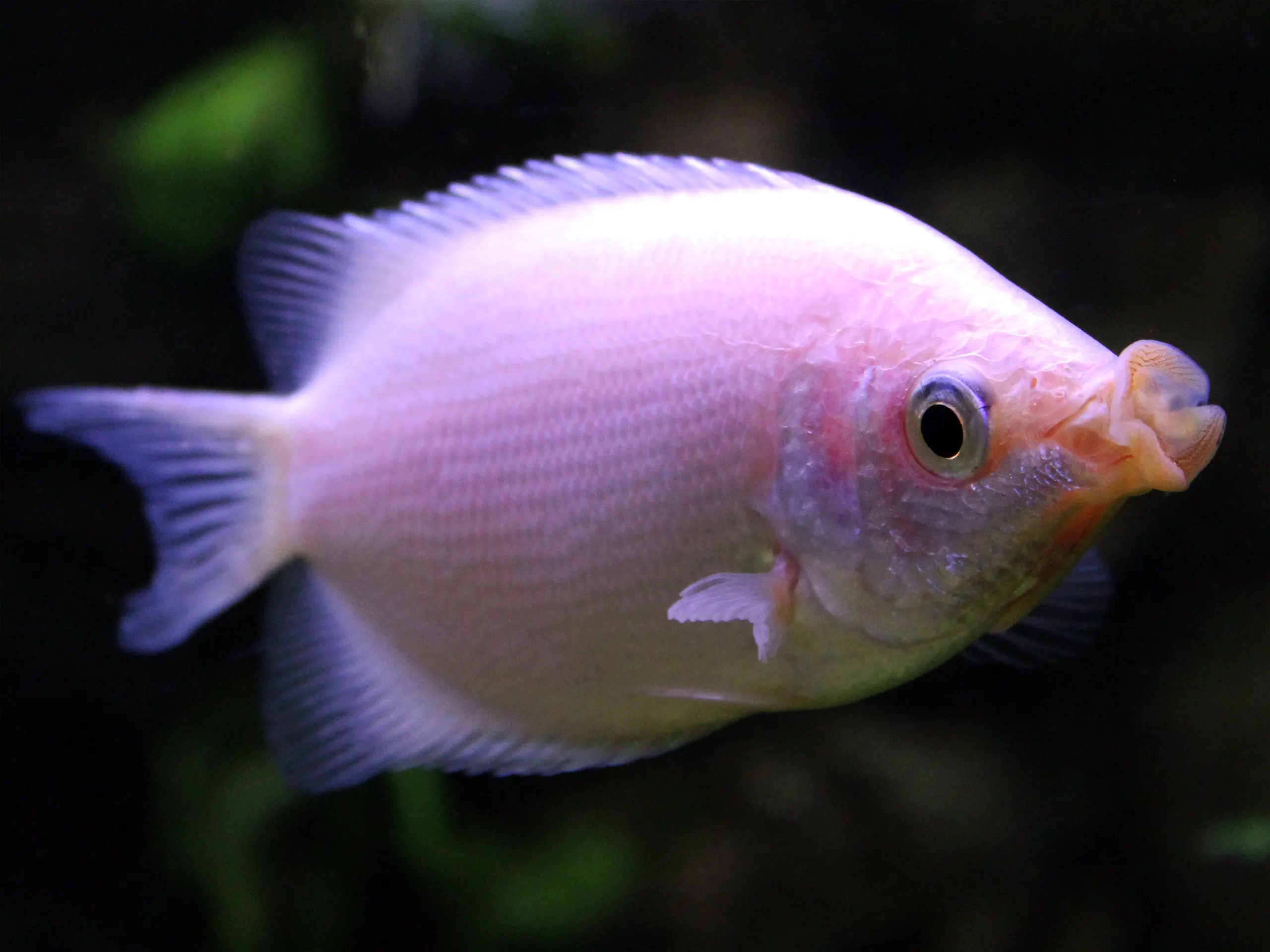
Oscar
● Friendly in nature and also called American Dog
● The Oscar is from the Cichlidae family and is known by names – Black oscar and marble cichlid.
● A tropical species, it is native to South America but has been introduced in Australia, China and India.
● They can reach a length of up to 45 cm and weigh 1.6 kgs.
● They have a lifespan of 10-20 years and can tolerate temperatures between 23°-27°C.
● This species is primarily carnivores and feeds on shrimps, insects, smaller fish and larvae
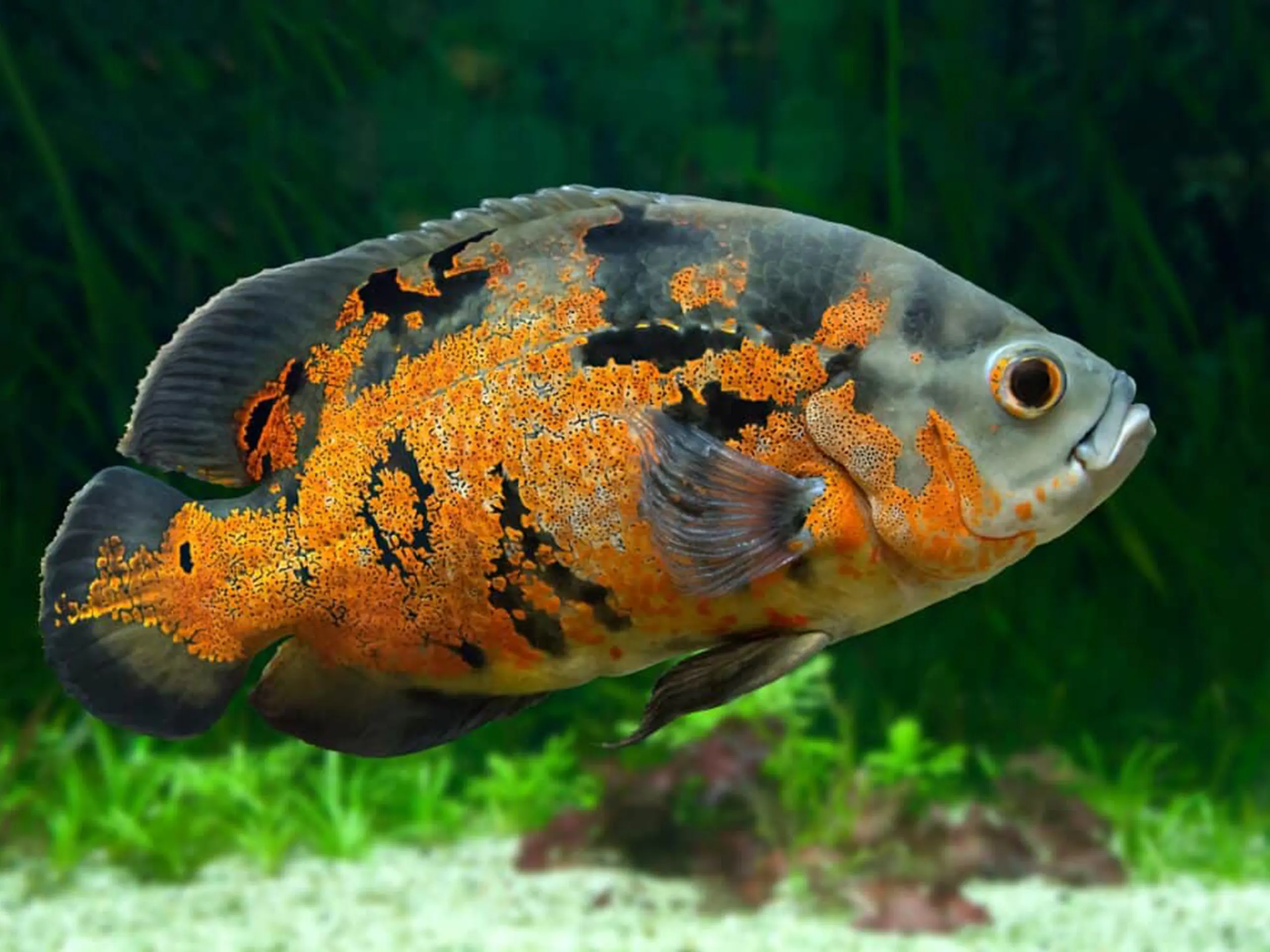
Cichlid
● Cichlids are from the Cichlidae family, which is one of the largest vertebrate families.
● These are freshwater aquarium fish, quite liked by hobbyists.
● Cichlids are originally from Africa and South America.
● Cichlids can be herbivores, carnivores or omnivores depending on the species. They survive in 23°-28°C temperatures and live for about 10-12 years.
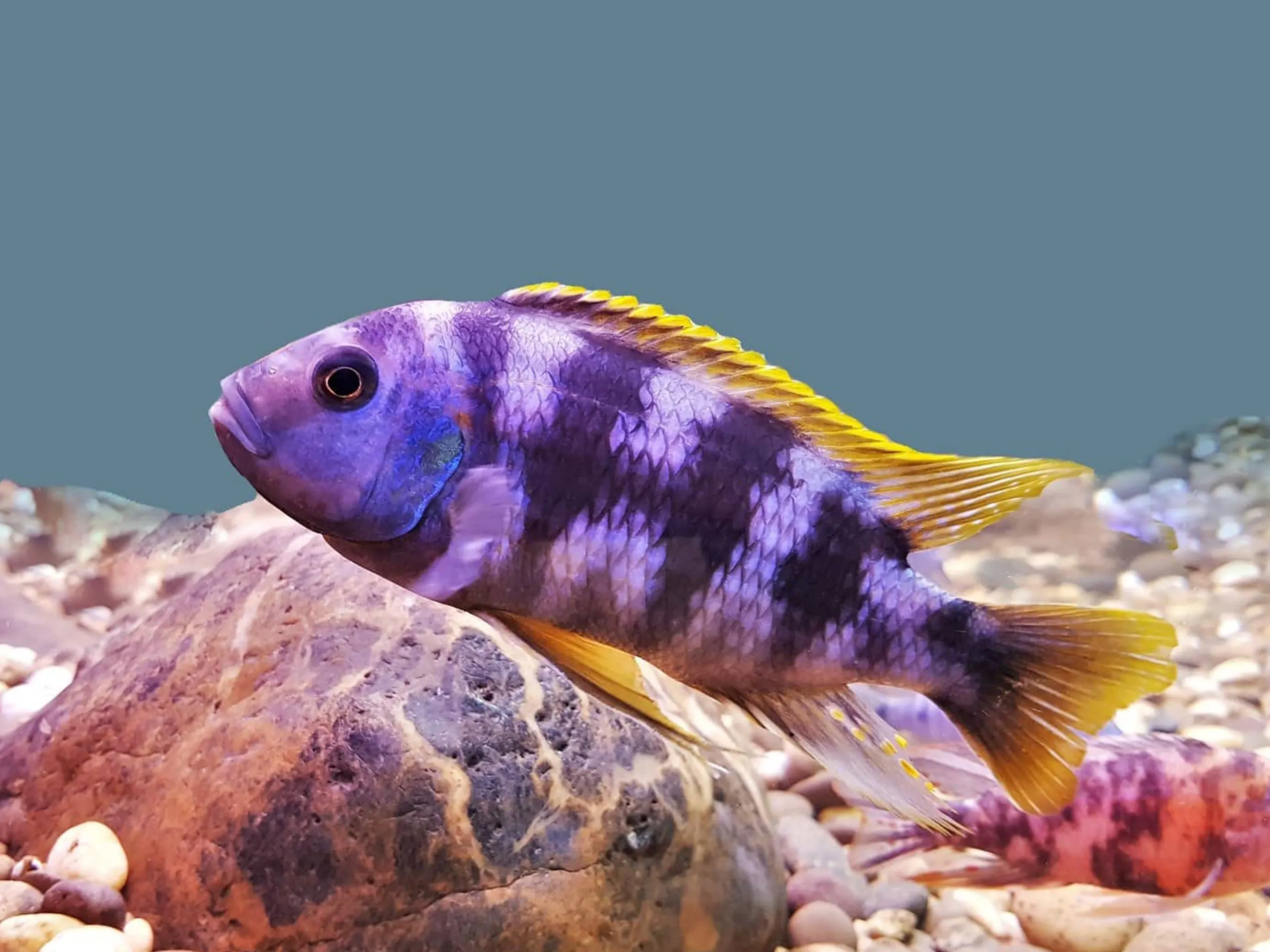
Swordtail Fish
● Swordtail fish is a freshwater/brackish species of the Poeciliidae family.
● It is originally from North and Central America.
● It is named as such because of its tail shape similar to a ‘sword’.
● It measures between 5.5-6.3 inches in length.
● It feeds on both plants, small insects and worms.
● This species lives for around 3-5 years and thrives best in temperatures between 22°-26°C.
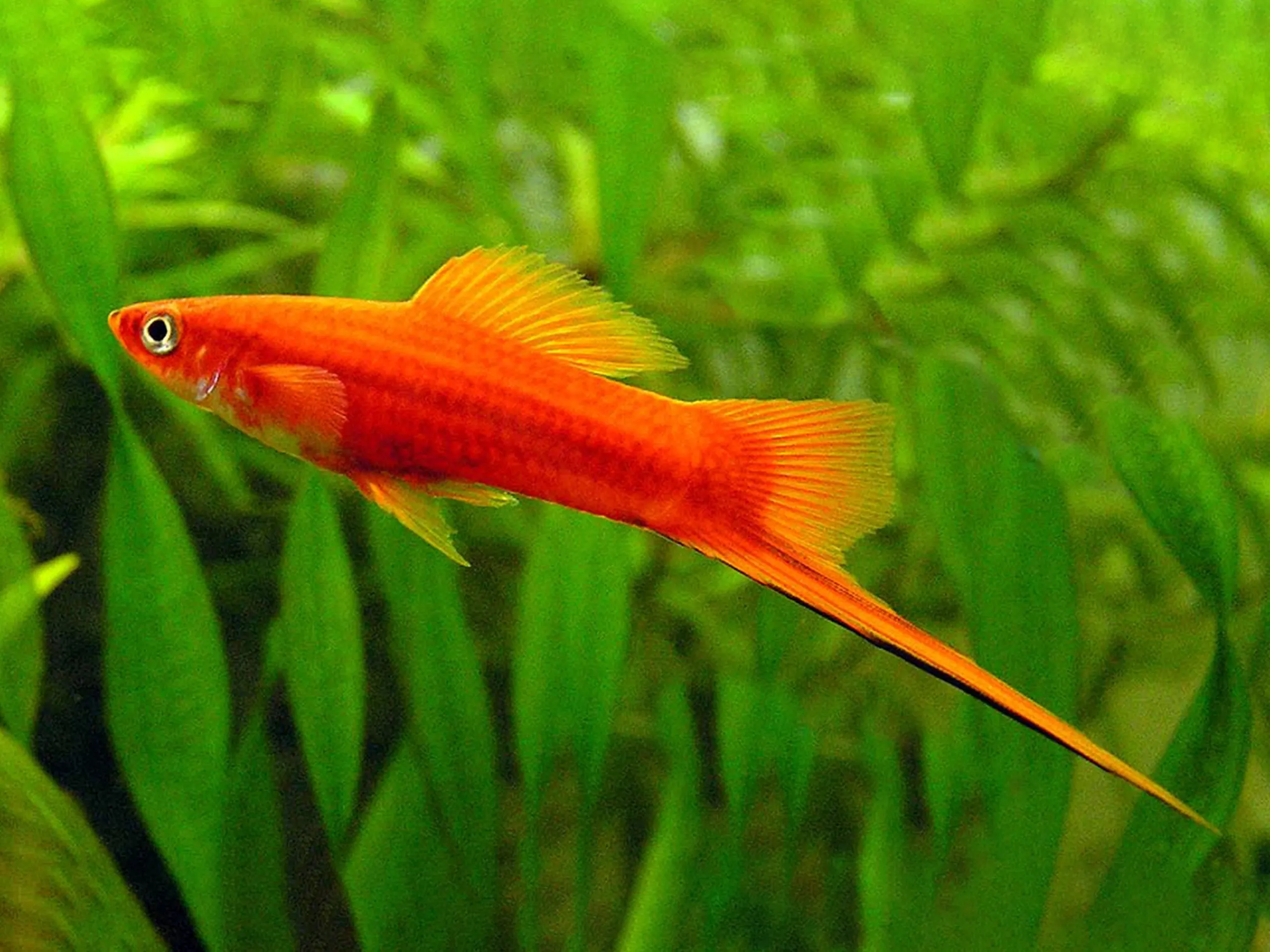
Albino Buenos Tetra
● Eyes looks like they are Blind
● Albino Buenos Tetra also known as Red Minor tetra, Jewel tetra or Callistus tetra, is of the Characidae family.
● A tropical freshwater species is a native to South America primarily found in Brazil, Peru, Bolivia and Paraguay.
● It can reach a length of 5 cm.
● It is an omnivore and derives its nutrition from flakes and bloodworms.
● Ideal temperature for this species is 22°-27°C and it lives for about 7 years.
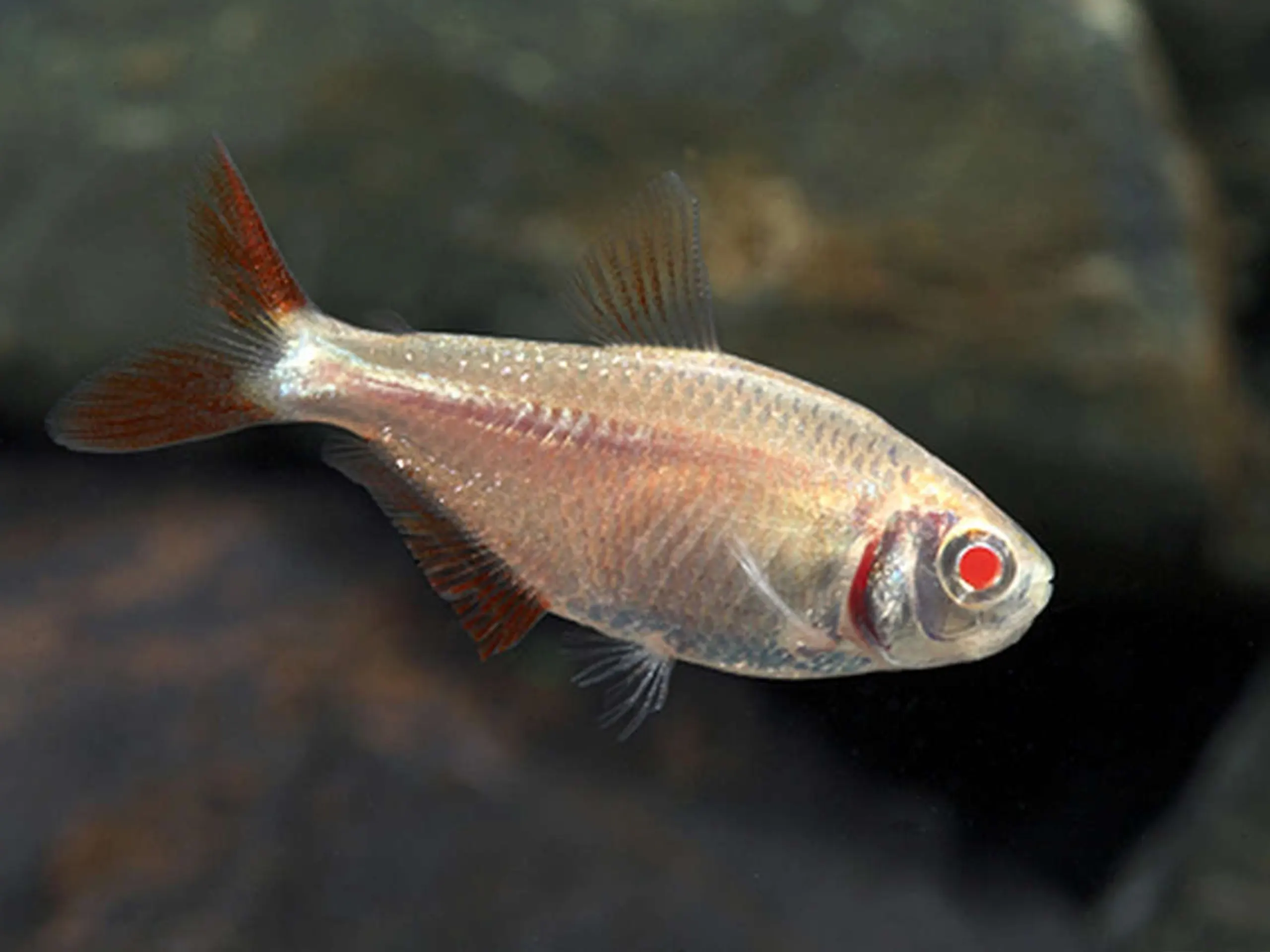
Platy
● Platy Has a MICKEY MOUSE FACE on the tail.
● Platy (Xiphophorus maculatus) is also from the Poeciliidae family.
● It is originally from the east coast of Central America and southern Mexico.
● The platy usually grows up to 7cm.
● Their average lifespan is around 3 years and are kept at 21°-25°C.
● This species is omnivorous and feeds on flakes, pellets, worms, insects and small crustaceans.
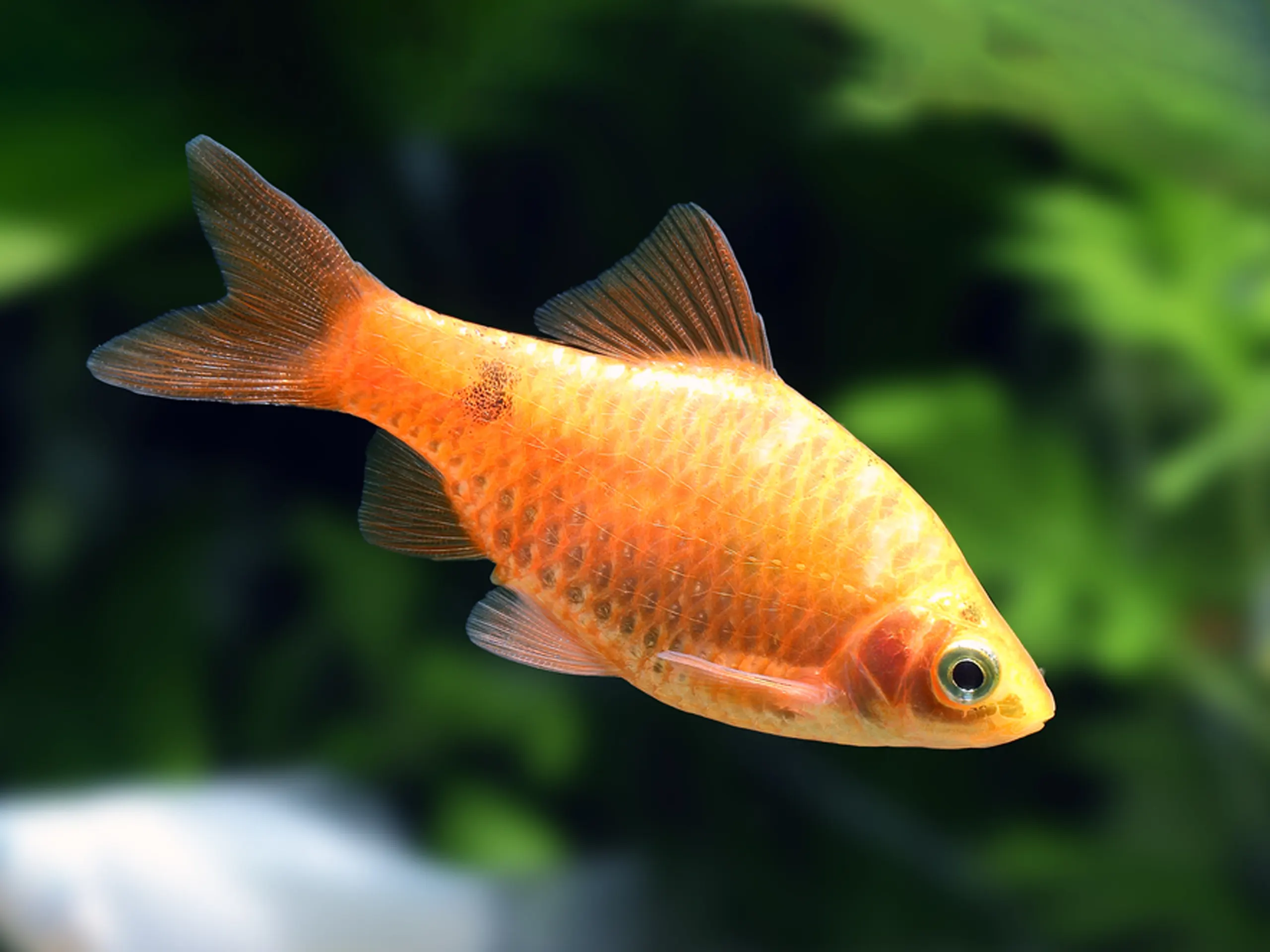
Black Widow Tetra
● This freshwater fish also goes by the name black skirt tetra, petticoat tetra and blackamoor and is from the Characidae family.
● Native to South America, it is mainly found in the Paraguay river basin.
● It reaches a length of about 7.5 cm.
● It often feeds on live foods – daphnia and mosquito larvae.
● It can tolerate temperatures between 15°-32°C and lives for 3-5 years.
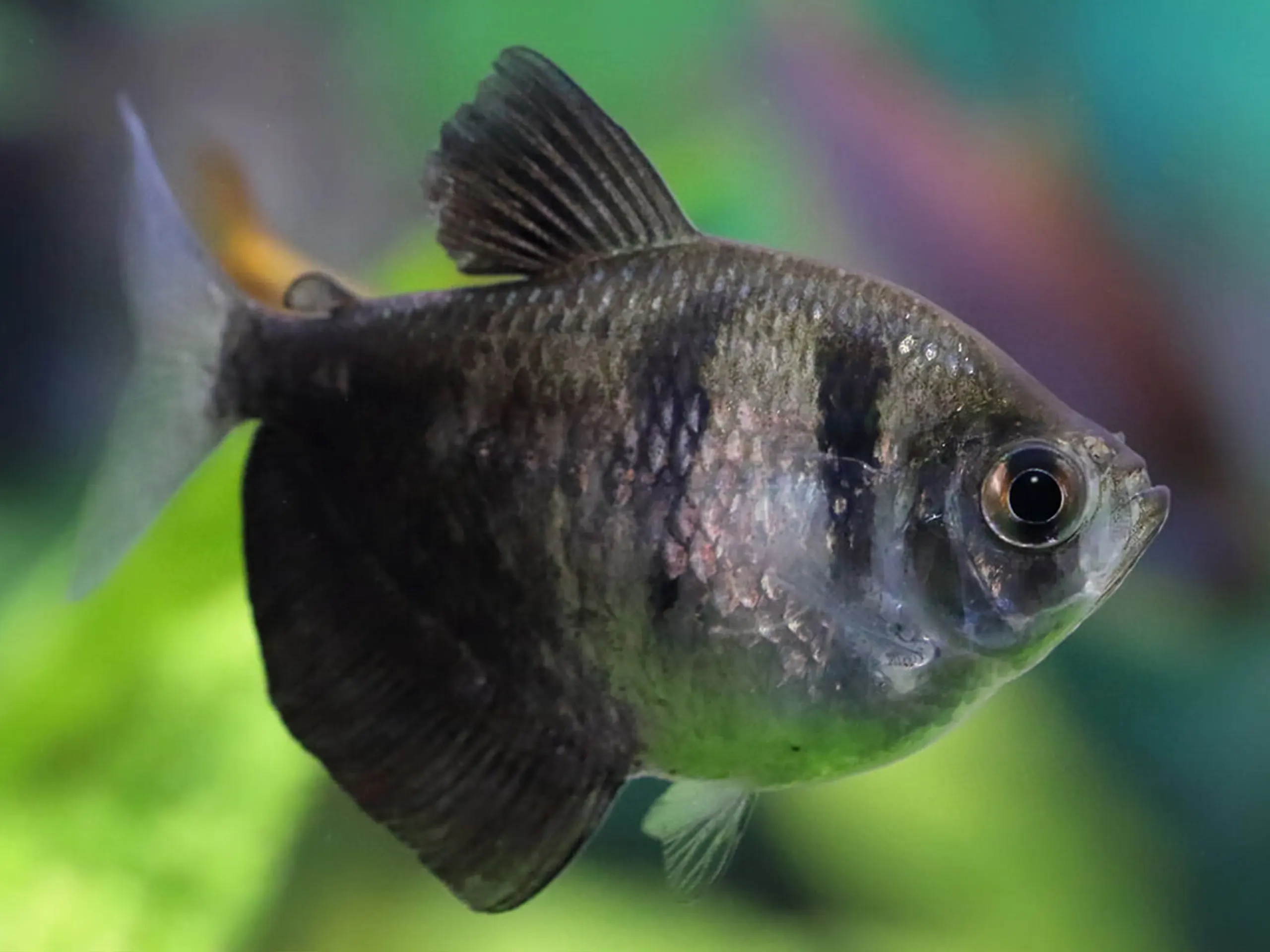
Rosy Barb
● Platy Has a dot on the tail
● The rosy barb (Pethia conchonius) is a freshwater water from the Cyprinidae family.
● It is a tropical species and is natively from Southern Asia.
● It measures about 6 inches and can weigh up to 340 kg.
● They can be kept at 18°-22°C and live for around 5 years.
● They feed on worms, insects and plant matter.
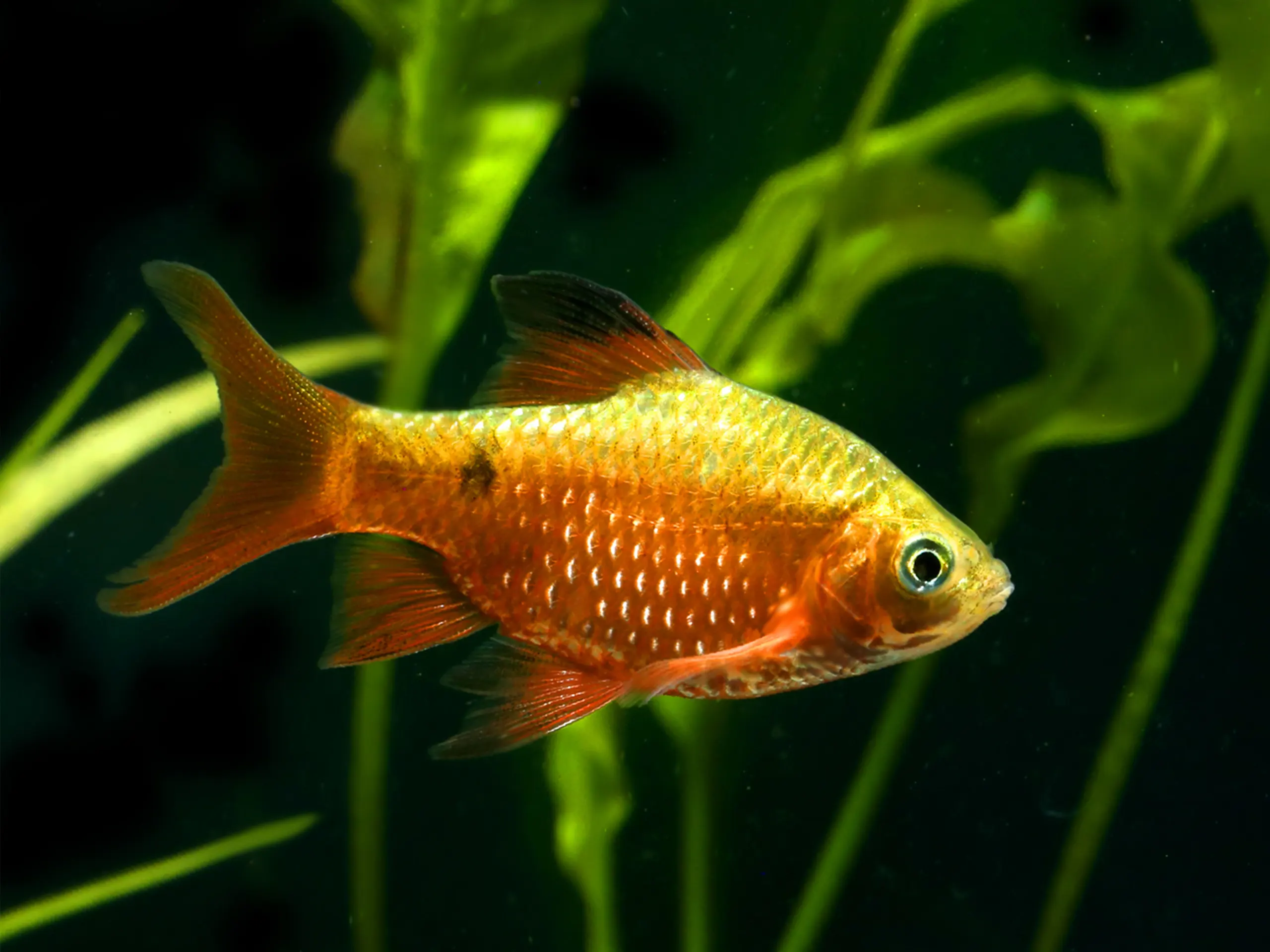
Blue and Gold Gourami
● The three spot gourami is commonly known as blue gourami and gold gourami and is from the Osphronemidae family.
● It is originally from Southern Asia and is popular in aquariums.
● It is a freshwater fish and can be found in wetlands and swamps.
● Their diet consists of zooplankton, insect larvae and also algae.
● This species can tolerate 22°-27°C and can live for up to 5 years.
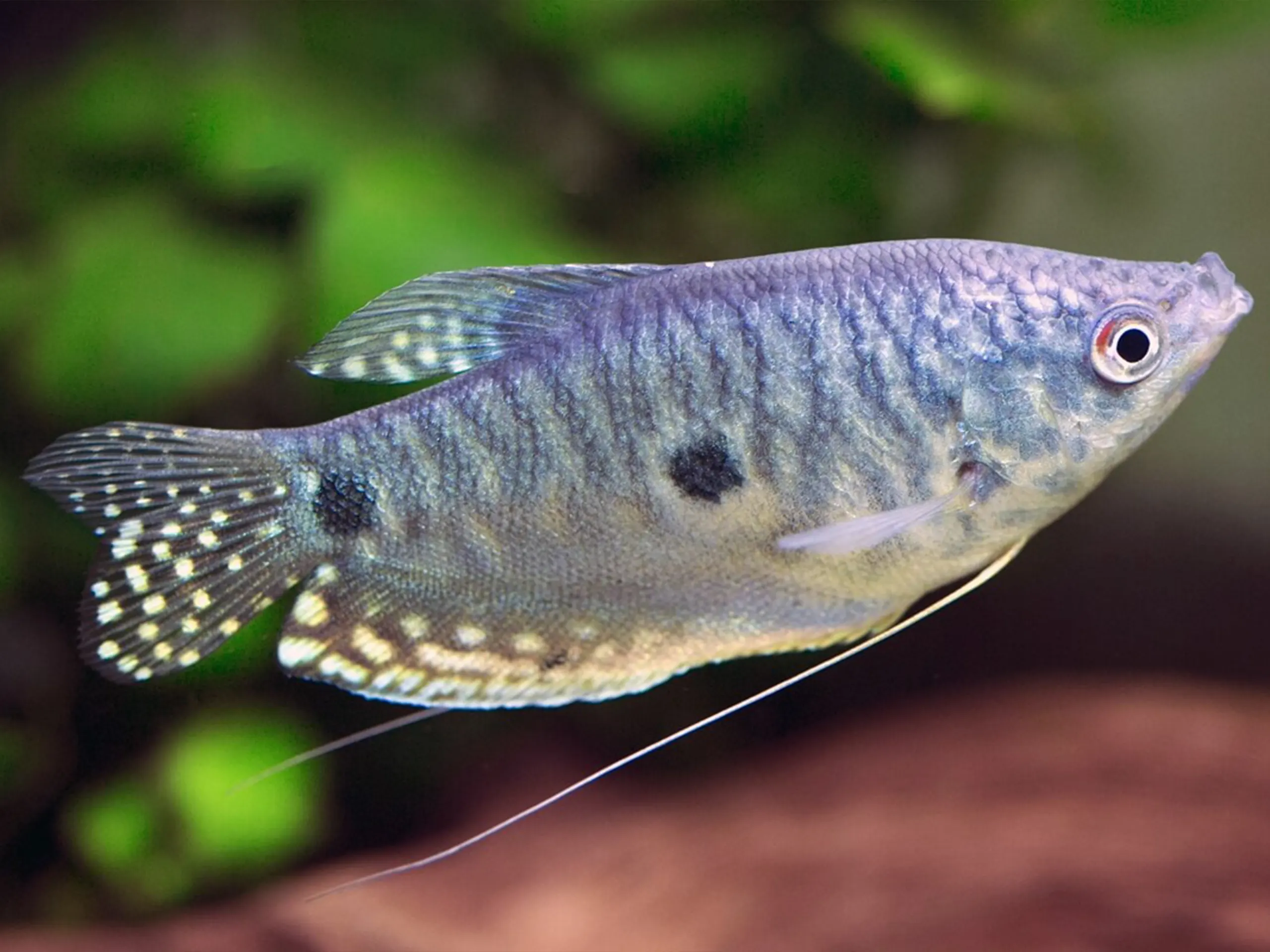
Slender Danios
● They are alos called Zebra Danios.
● Danio is a freshwater fish species and is from the Cyprinidae family.
● It is native to South and Southeast Asia..
● It feeds on small insects and worms.
● They can reach a length of 2 inches.
● They have a life expectancy of 3.5-5.5 and the ideal temperature is 26°-28°C.
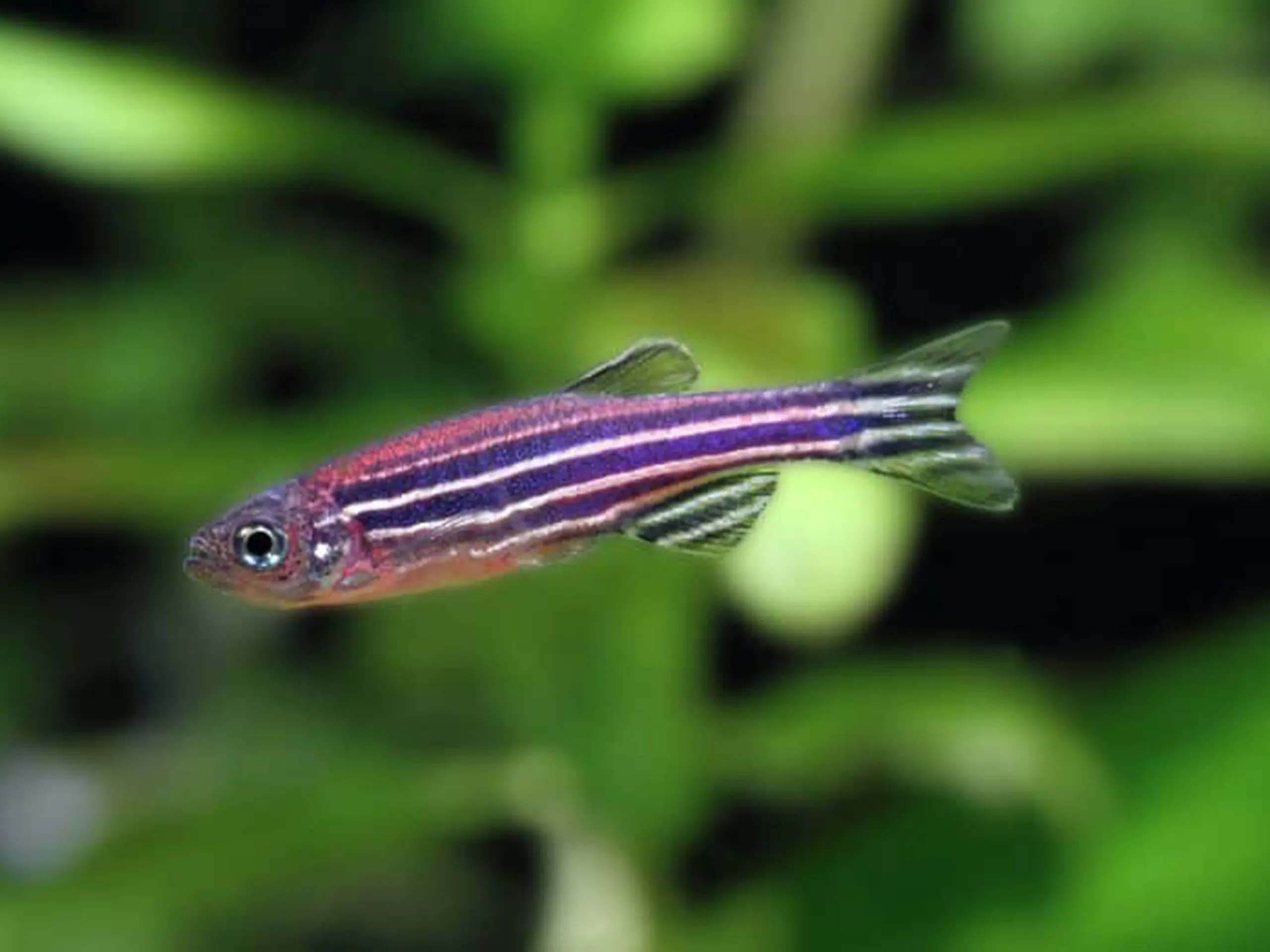
Sea Water Marine Fishes
Clownfish Nemo
● Clownfish are also known as anemonefish, because they live in symbiotic relationships with sea anemones. They are protected by the anemone’s stinging cells, while they defend the anemone from predators.
● Clownfish are found in tropical waters of the Indian and Pacific Oceans, primarily around coral reefs. The most famous species is the orange and white striped Clownfish, like Nemo from the movie “Finding Nemo”.
● Clownfish are sequential hermaphrodites, which means they can change their sex during their lifespan. All Clownfish are born male, but some can transition to female if there is no female present in their social group.
● Clownfish are omnivorous, meaning they eat both plants and animals. Their diet consists of algae, plankton, mollusks, and small crustaceans.
● Clownfish are popular in the aquarium trade, but it is important to buy them from sustainable sources and not remove them from the wild. They can be difficult to care for, as they require a specific water temperature and pH level, as well as a suitable anemone host.
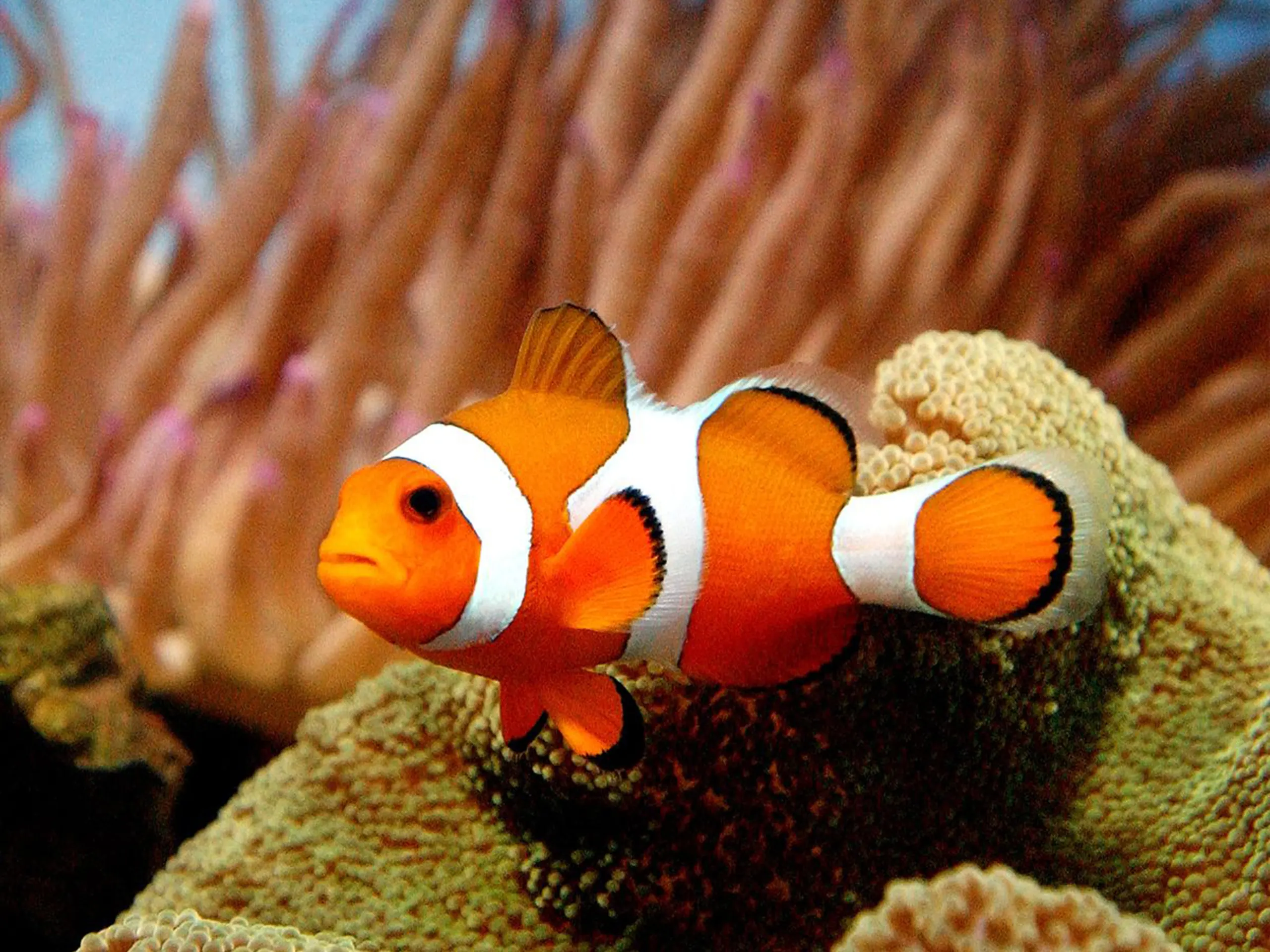
Starfish
● Starfish are also known as sea stars, but they are not actually fish. They belong to a group of marine invertebrates called echinoderms, which also includes sea urchins and sand dollars.
● Starfish have a unique ability to regenerate lost limbs. If a starfish loses an arm, it can grow a new one to replace it. In some cases, a starfish can even regenerate an entire body from just one arm.
● Starfish come in a variety of colors, shapes, and sizes. The largest species can grow up to 24 inches (60 cm) in diameter, while the smallest species are less than 0.4 inches (1 cm) across.
● Starfish are found in all of the world’s oceans, from the shallowest tidal pools to the deepest depths of the ocean floor. They are most commonly found in shallow tropical waters, where they feed on mollusks, crustaceans, and other small animals.
● Starfish are important members of marine ecosystems. They play a role in controlling populations of other animals, such as mussels and clams, and they help to maintain healthy coral reefs by controlling algae growth.
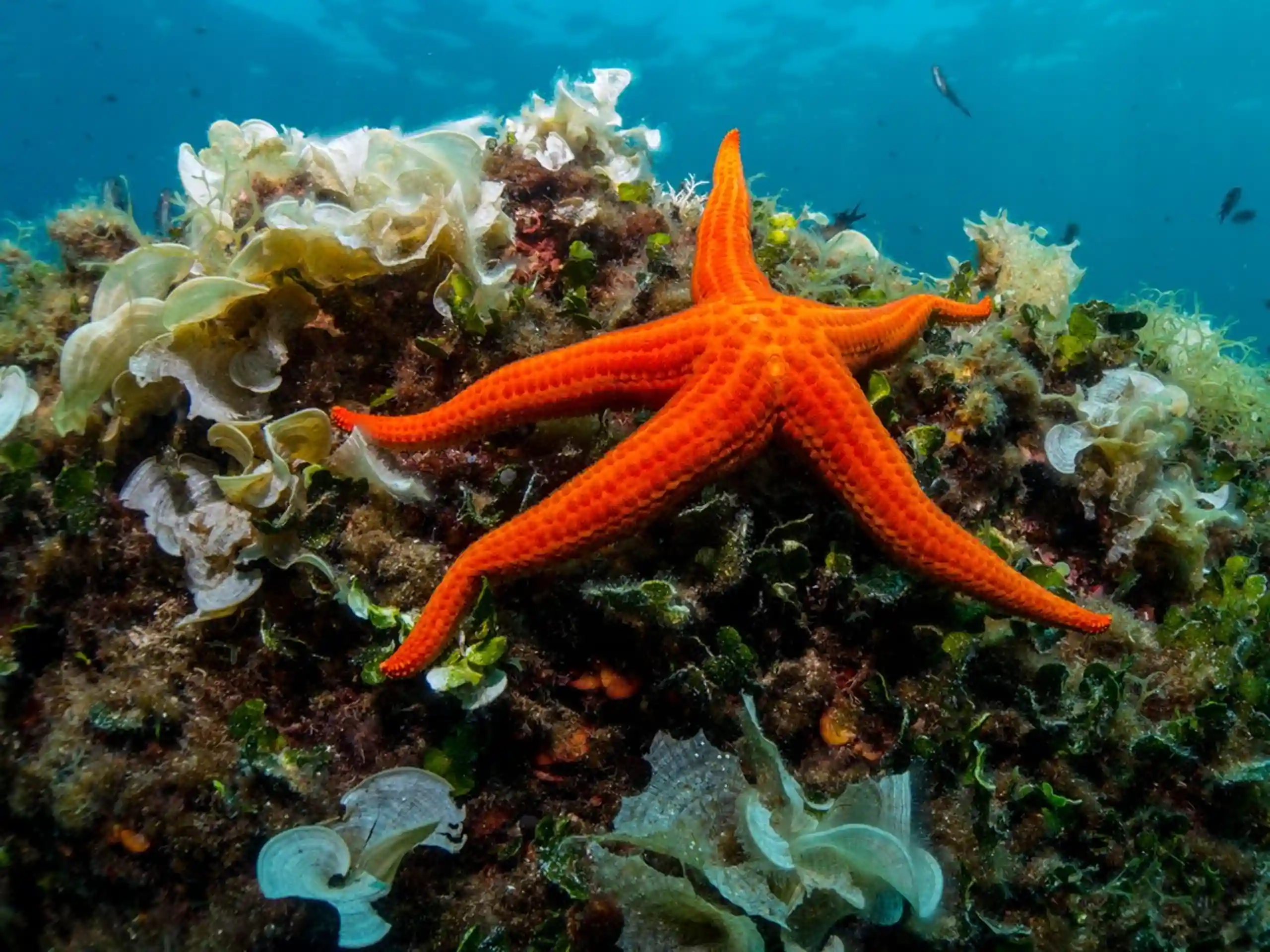
Butterfly Fish
● Butterflyfish are a family of small to medium-sized tropical marine fish that are found in the Atlantic, Indian, and Pacific Oceans. They are known for their bright colors and striking patterns, which make them popular aquarium fish.
● There are over 100 species of butterflyfish, ranging in size from 2 to 9 inches (5 to 23 cm) in length. Most species have a tall, narrow body and a long snout that they use to probe into coral crevices in search of food.
● Butterflyfish are primarily herbivorous, feeding on algae and other plant material. Some species also feed on small invertebrates and coral polyps.
● Butterflyfish form monogamous pairs and are often seen swimming together. They are known to be territorial and will defend their feeding and breeding areas against other fish.
● Butterflyfish are important members of coral reef ecosystems, playing a role in pollination and maintaining the health of the reef. However, many species are threatened by overfishing, habitat destruction, and climate change.
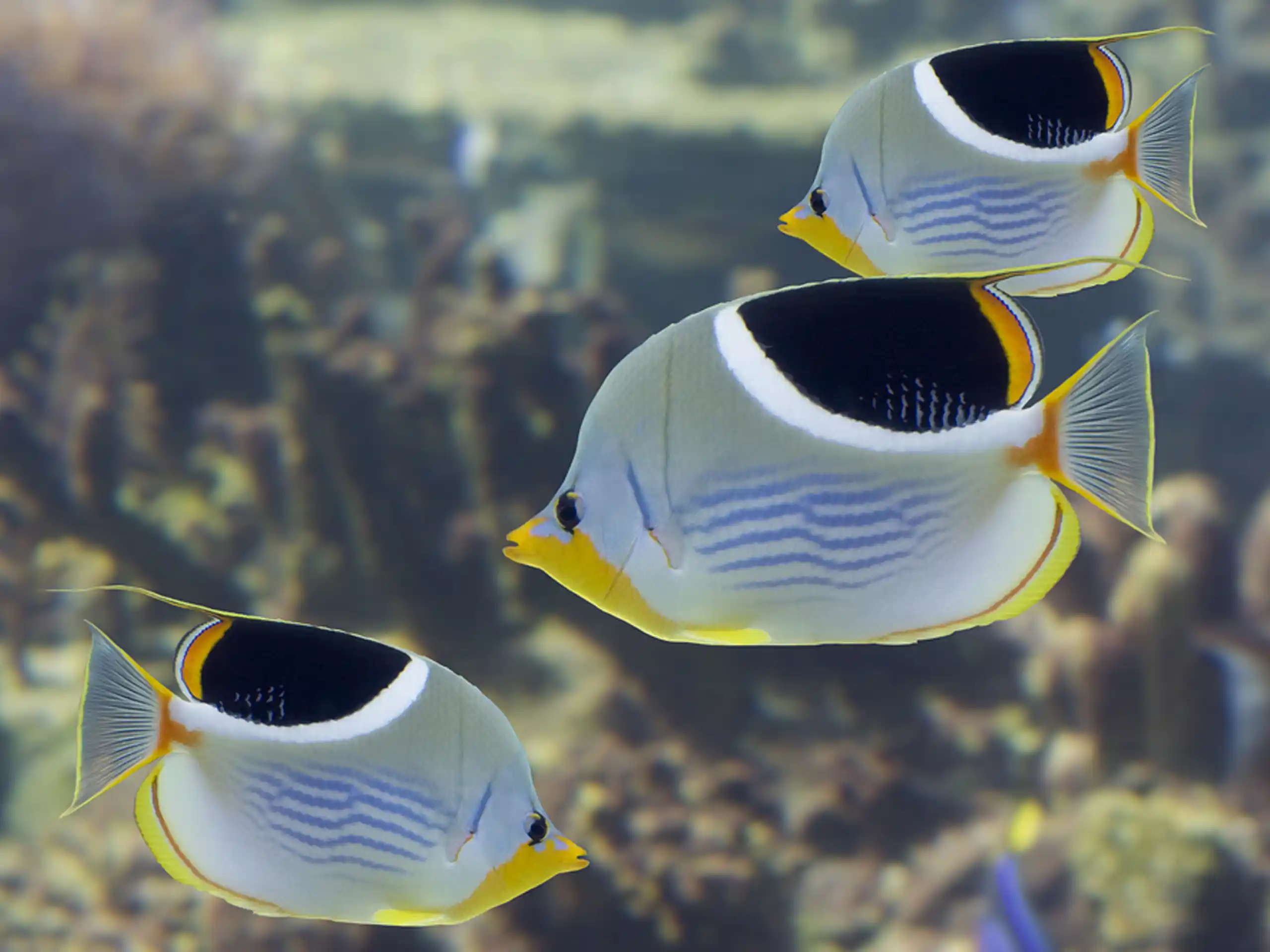
Lion Fish
● Lionfish are a venomous species of marine fish native to the Indo-Pacific region, but have been introduced to the Atlantic Ocean and Caribbean Sea. They have distinctive stripes and long, flowing fins that make them a popular aquarium fish.
● There are 18 species of lionfish, ranging in size from 6 to 18 inches (15 to 45 cm) in length. They have venomous spines on their fins and back, which they use for defense against predators.
● Lionfish are carnivorous and feed on a variety of small fish, crustaceans, and other invertebrates. They are known for their voracious appetites and can consume prey that is up to half their own body size.
● Lionfish are highly adaptable and can thrive in a range of environments, from coral reefs to mangrove forests. They are known to be invasive in some regions, where they compete with native fish for food and habitat.
● Lionfish are a popular game fish and are harvested by fishermen for both their meat and their attractive fins, which are used in the aquarium trade. However, their venomous spines make them dangerous to handle and require caution when fishing or handling them.
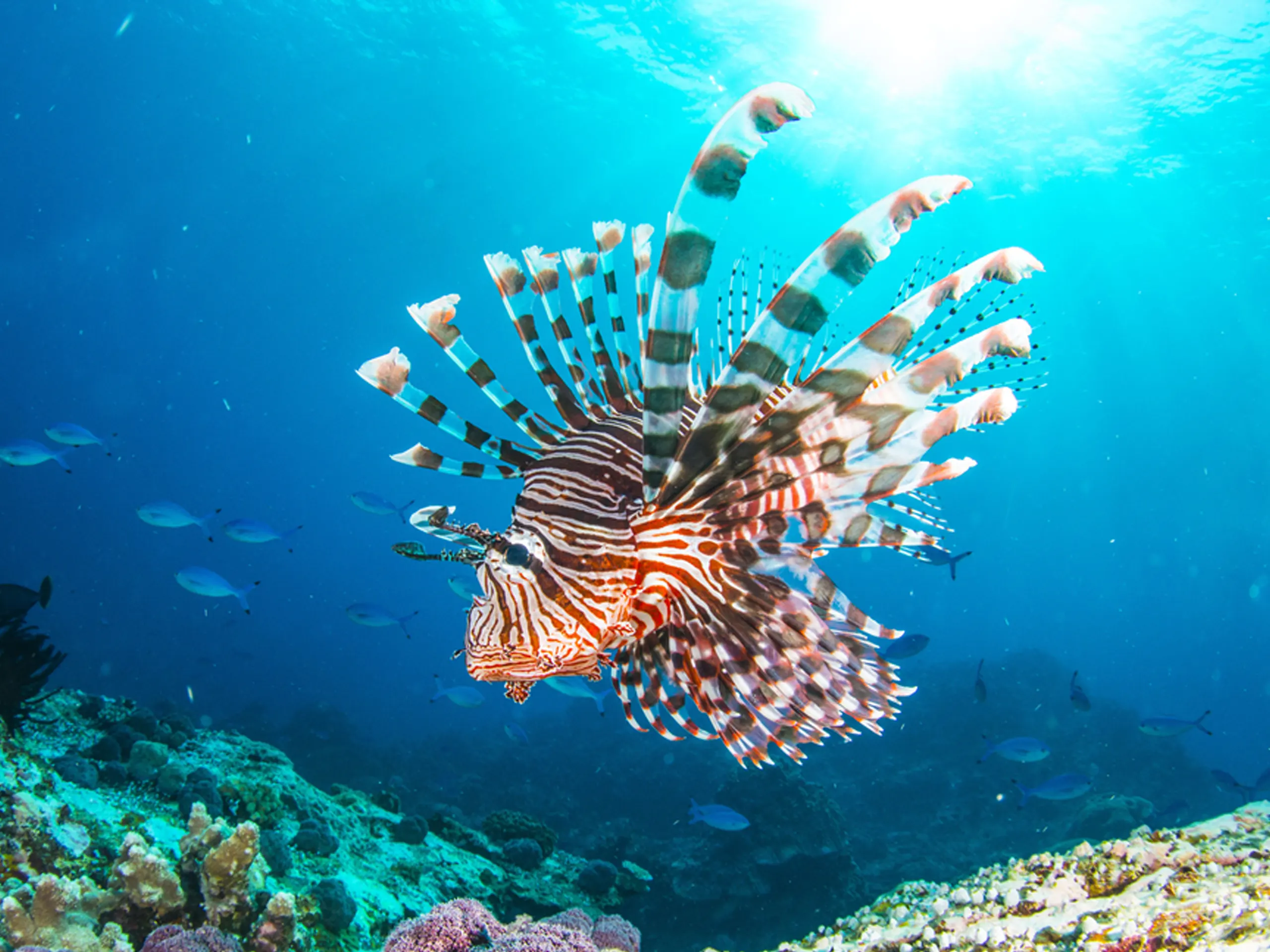
Saltwater Snails
● Saltwater snails are a diverse group of marine snails that are found in oceans all around the world. They come in a variety of shapes, sizes, and colors, and play important roles in marine ecosystems as both predators and scavengers.
● Saltwater snails have a hard, protective shell that they use for defense against predators and to regulate their buoyancy in the water. Some species also have a door-like structure, called an operculum, that they can use to seal themselves inside their shell for protection.
● Saltwater snails are herbivorous, carnivorous, or omnivorous, depending on the species. Some species feed on algae, while others eat small invertebrates, such as worms or other snails.
● Saltwater snails are important members of marine ecosystems, helping to regulate populations of algae and other invertebrates. They are also a source of food for many larger marine animals, such as fish, crabs, and sea stars.

